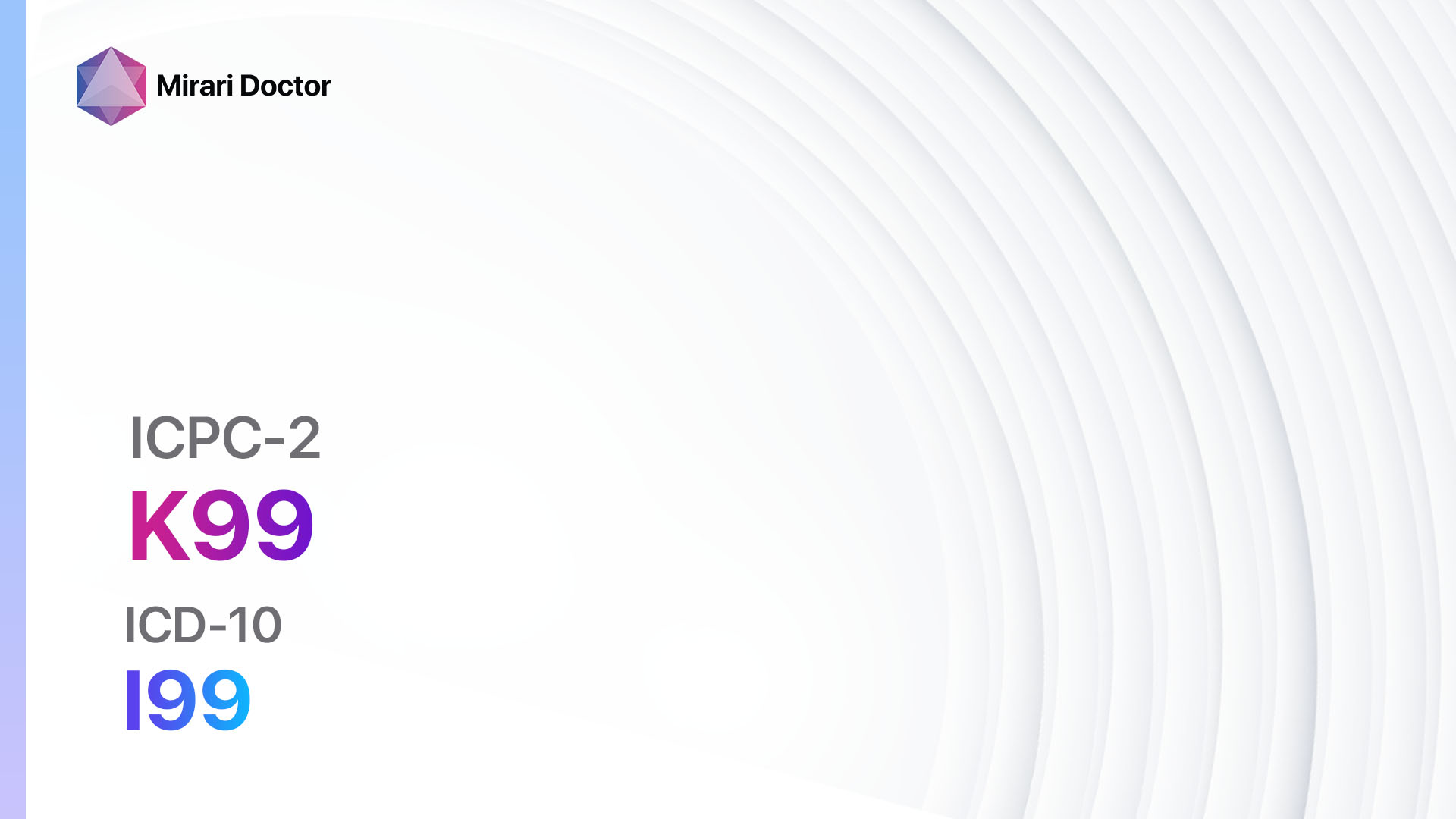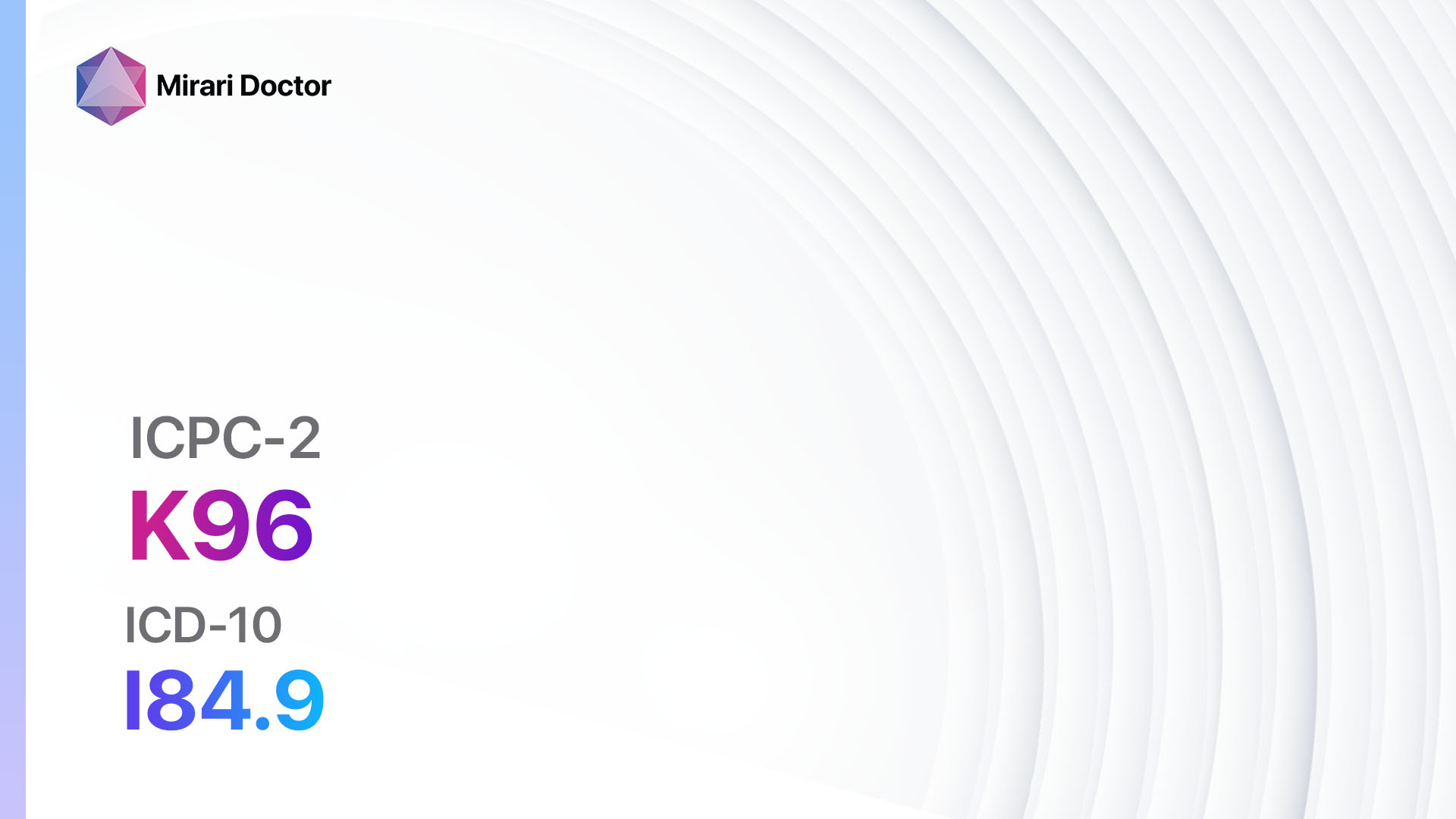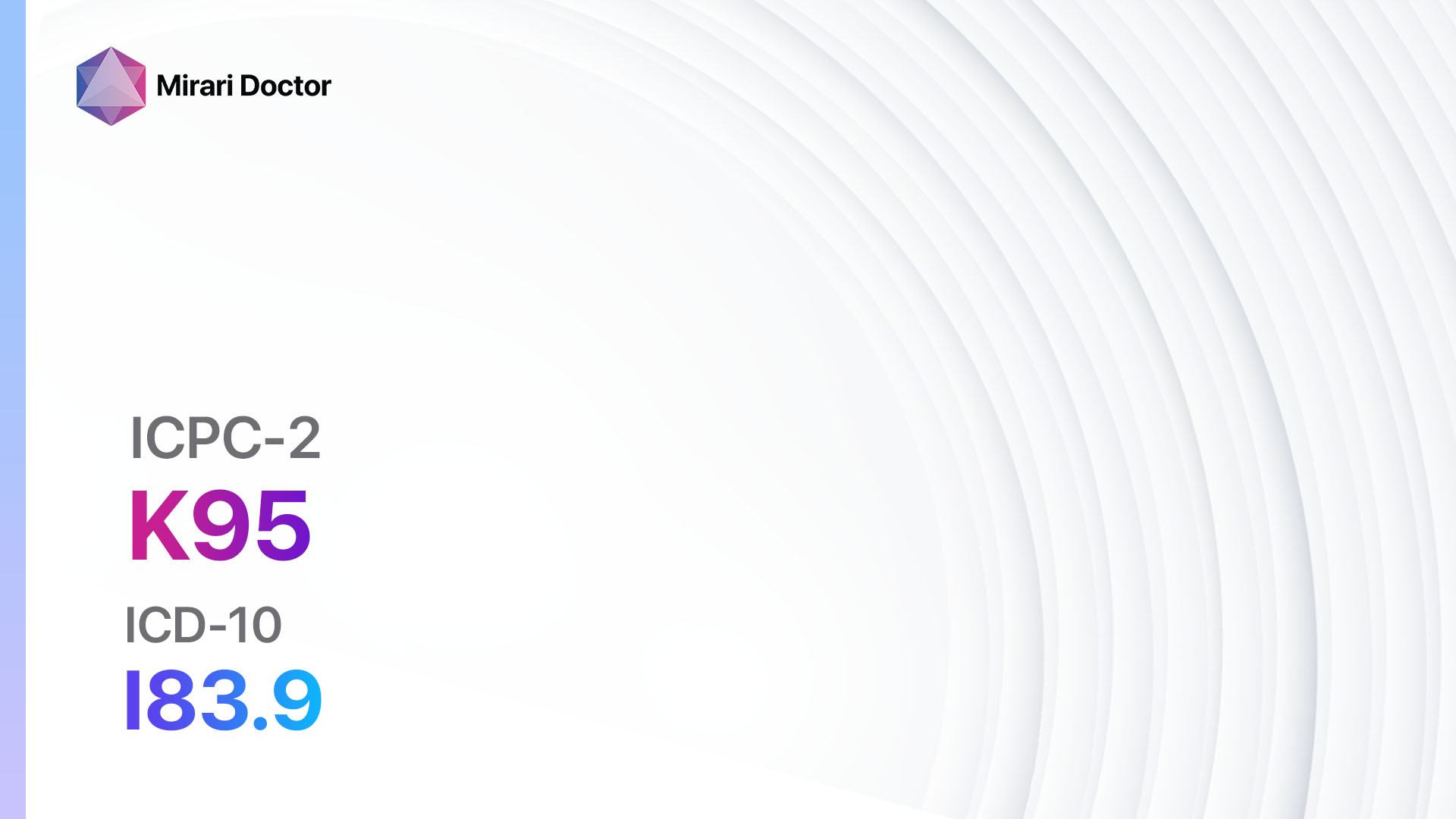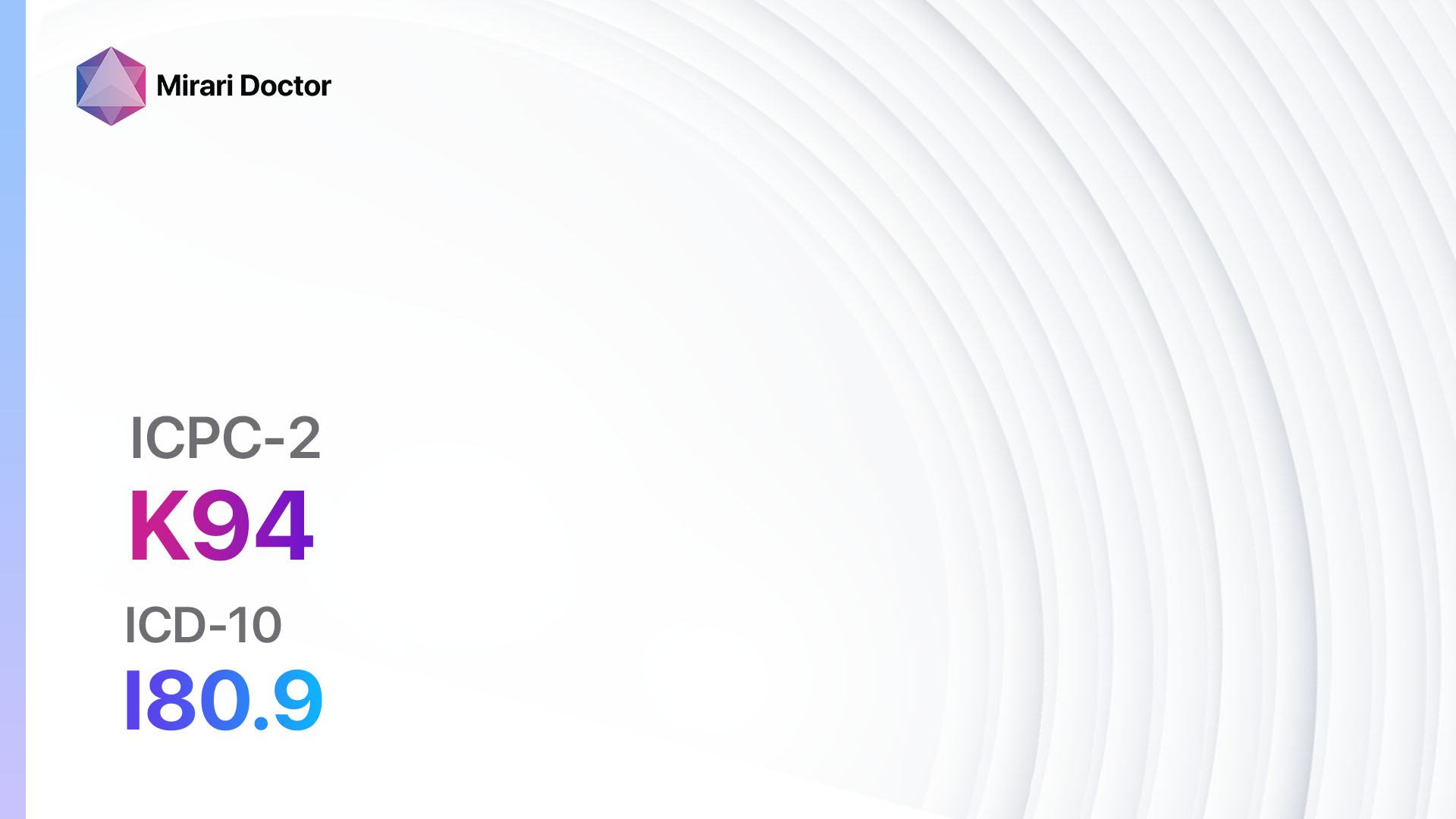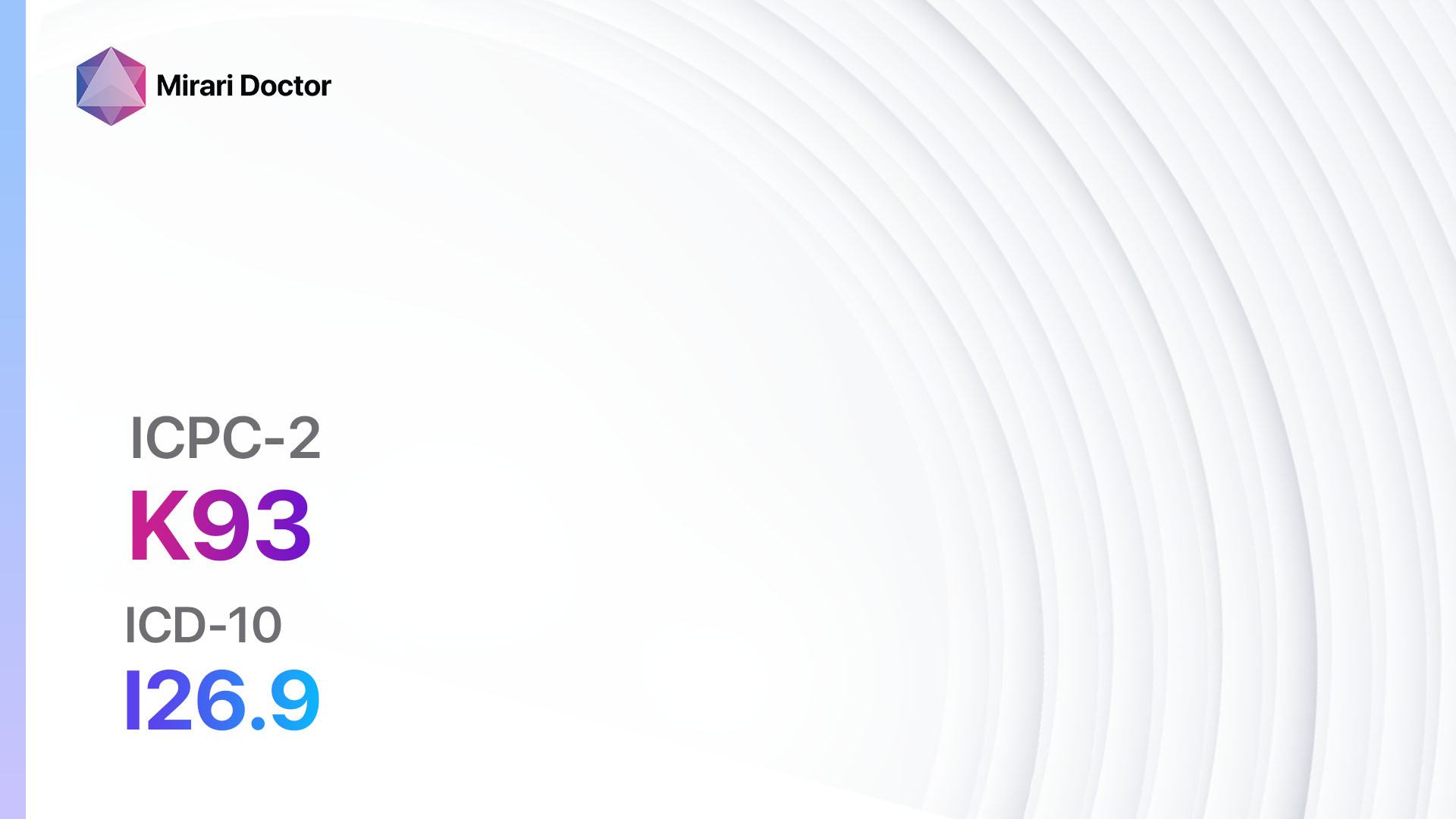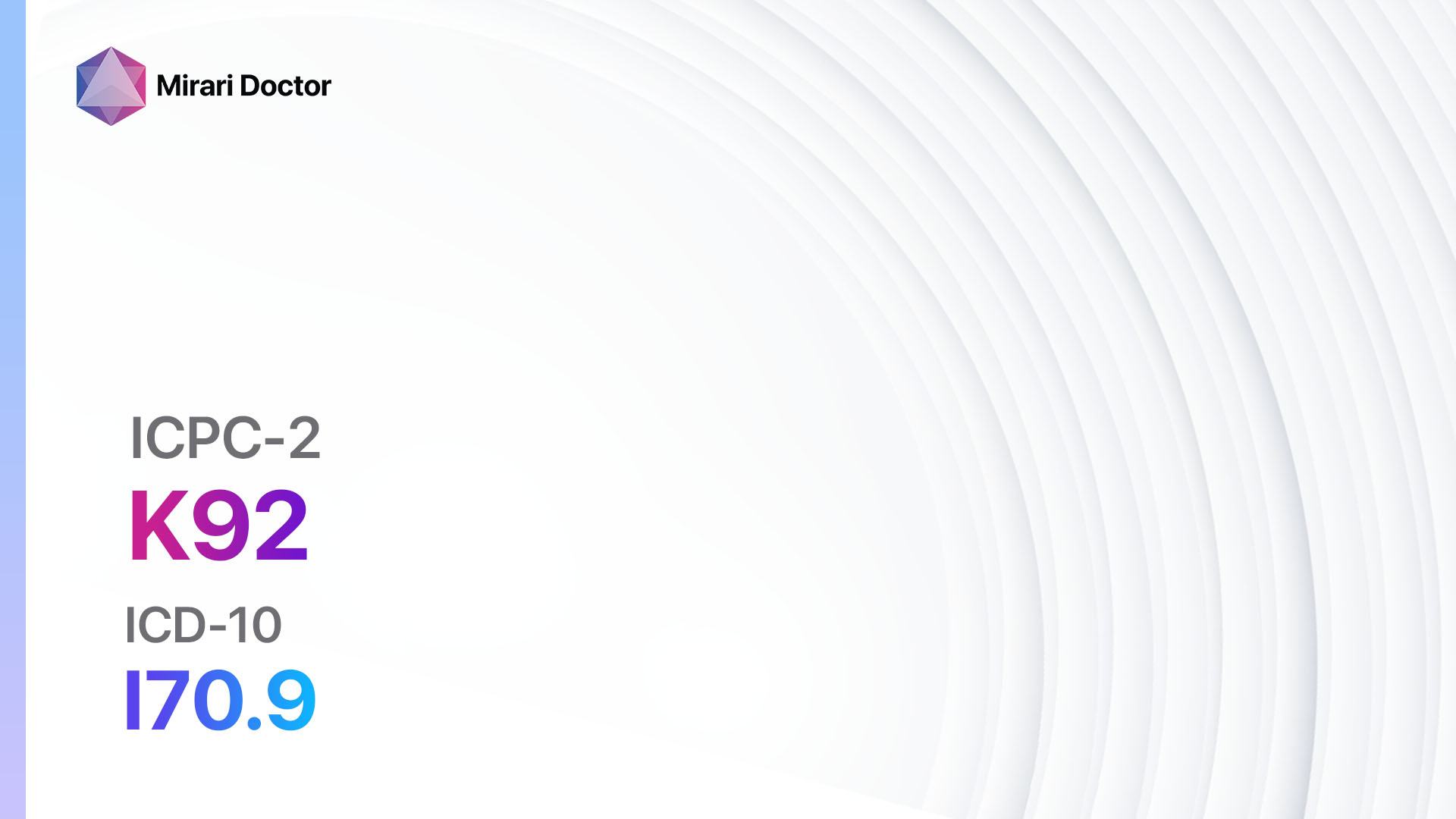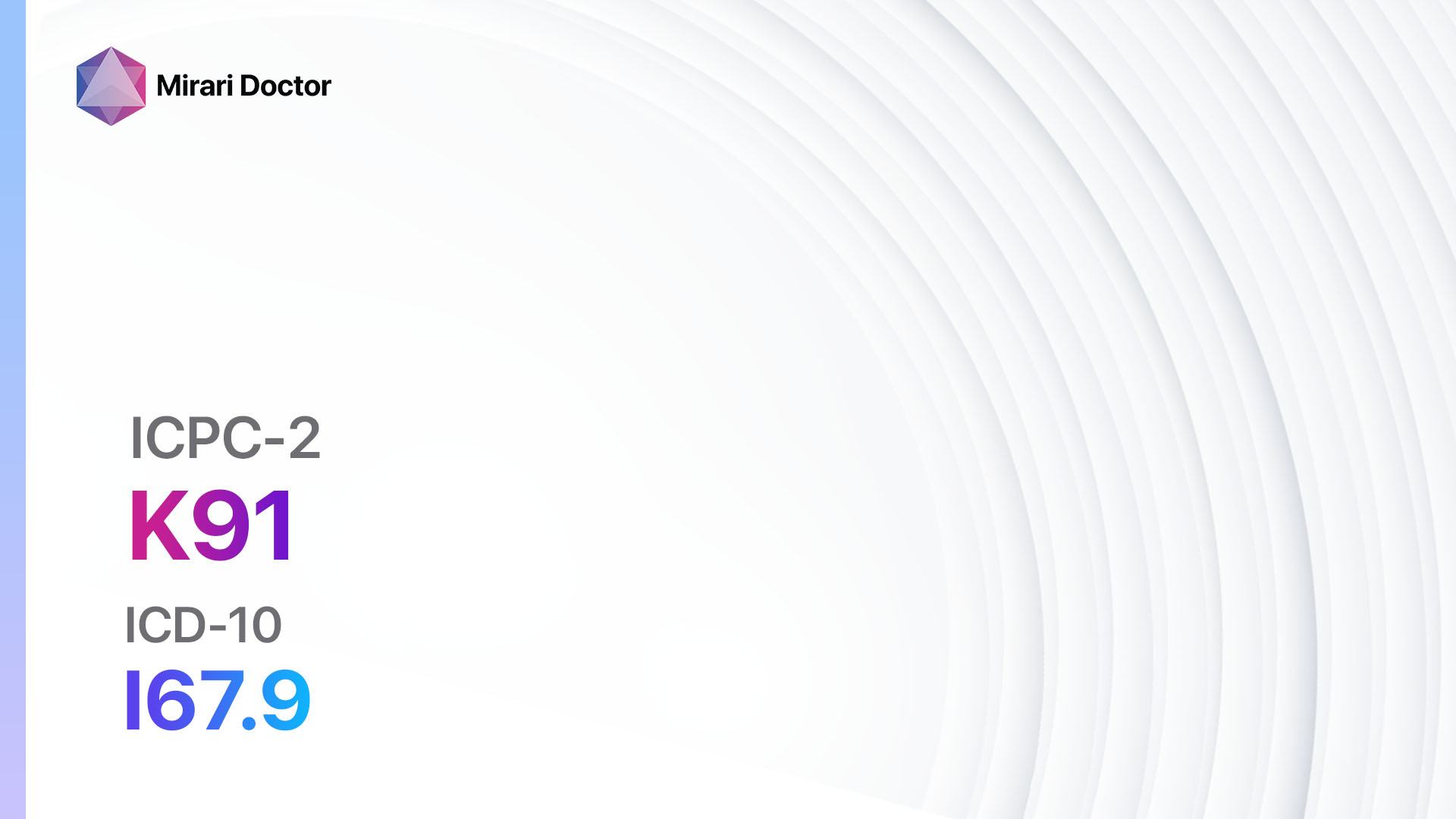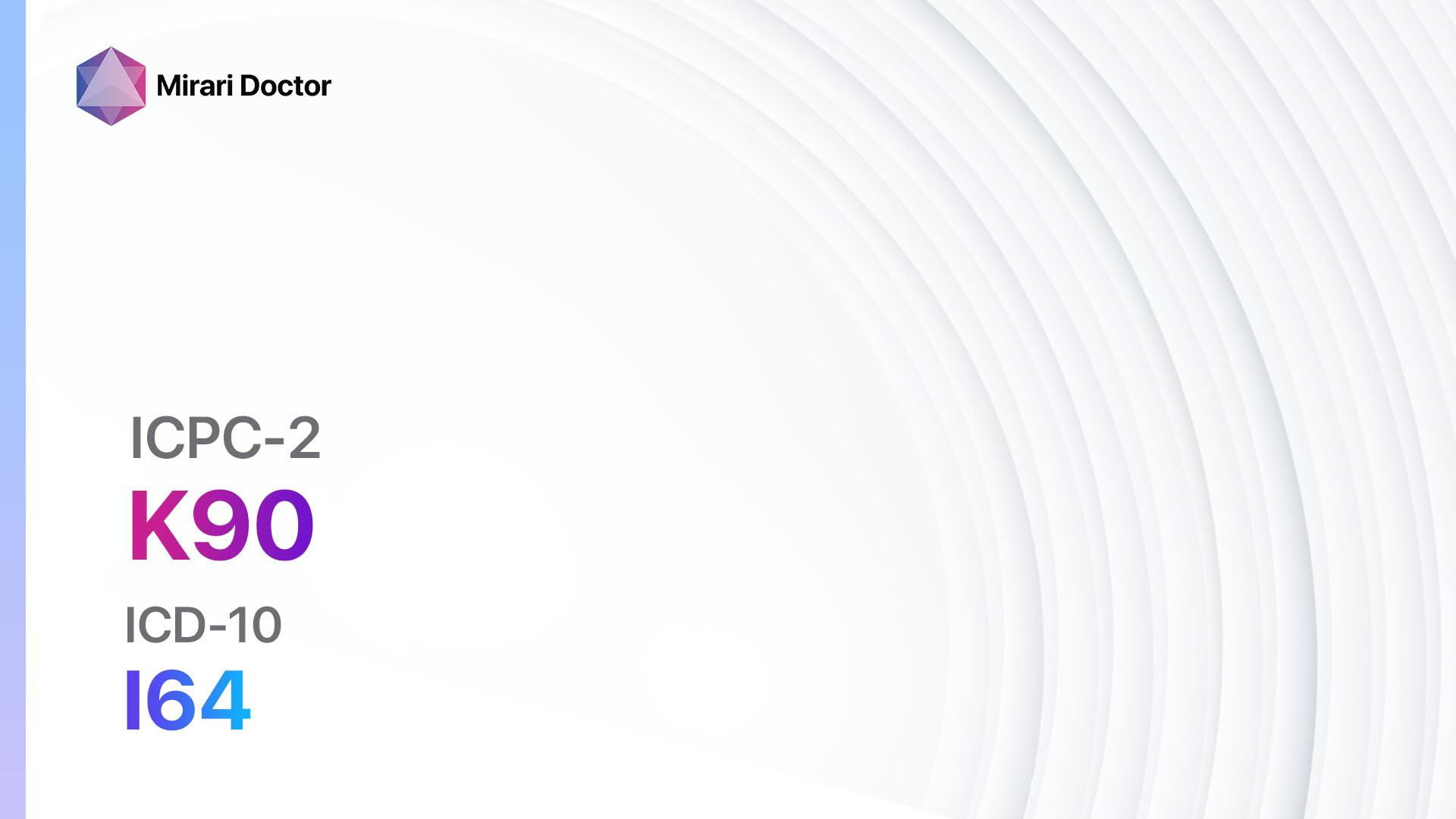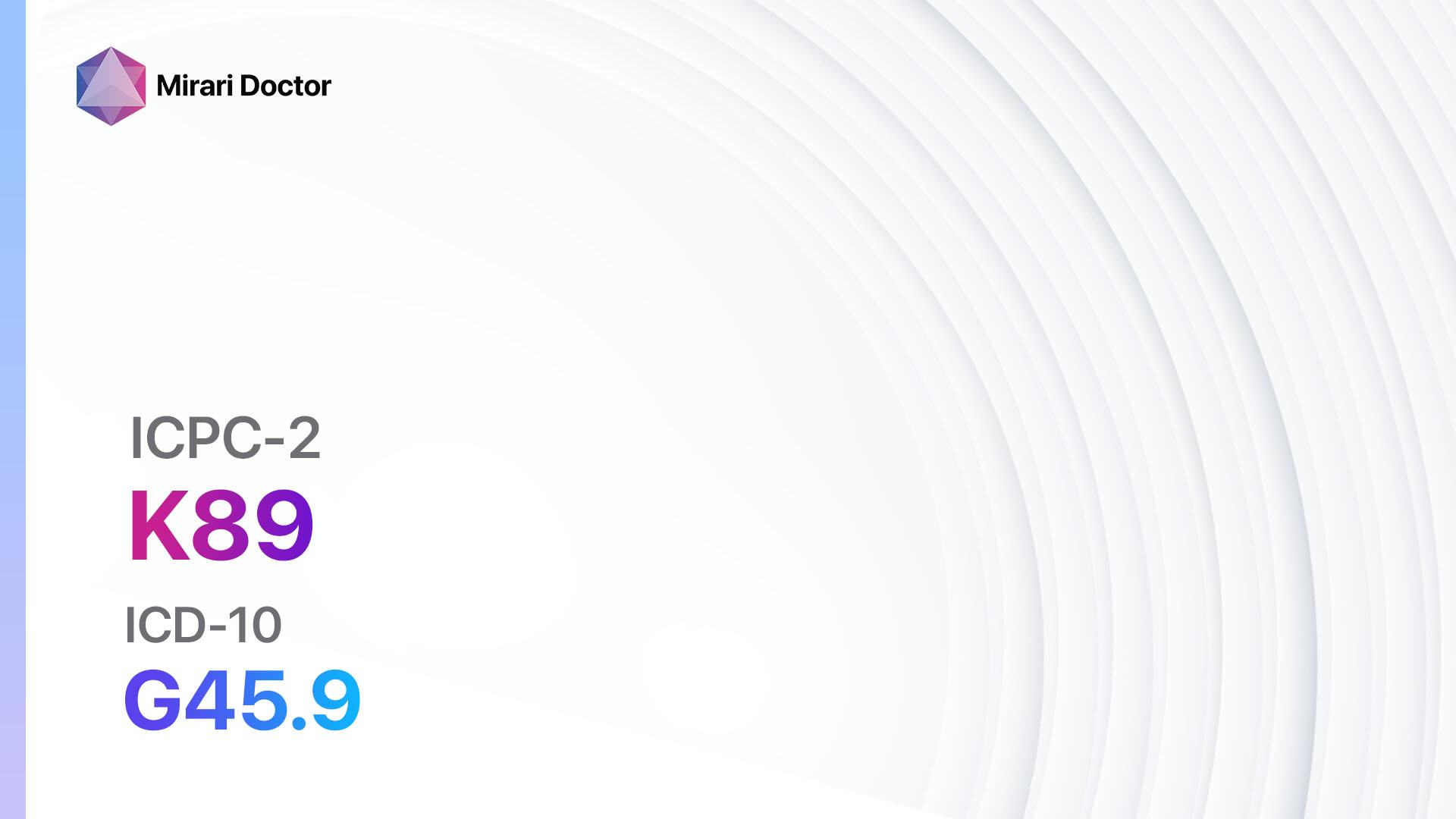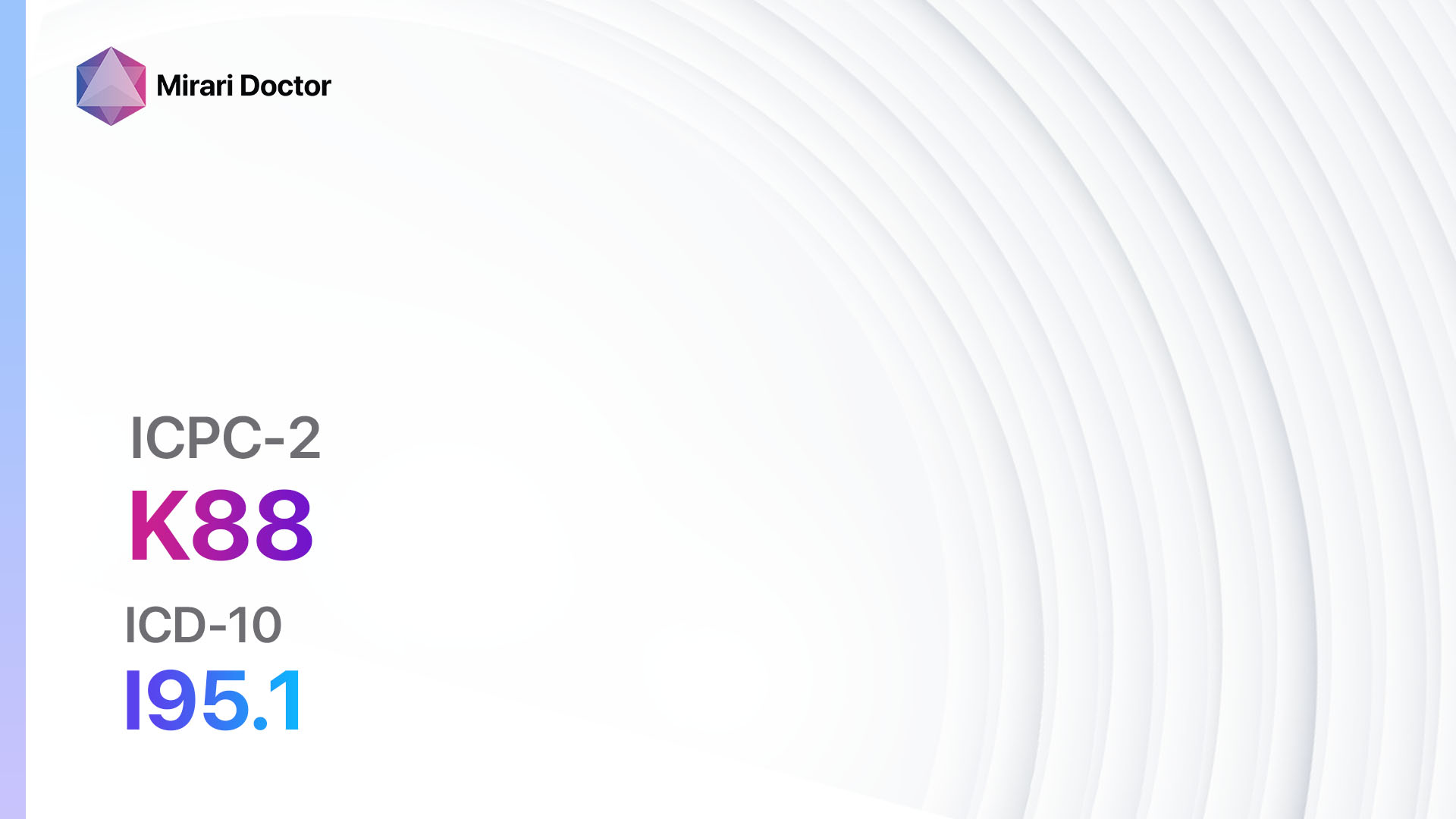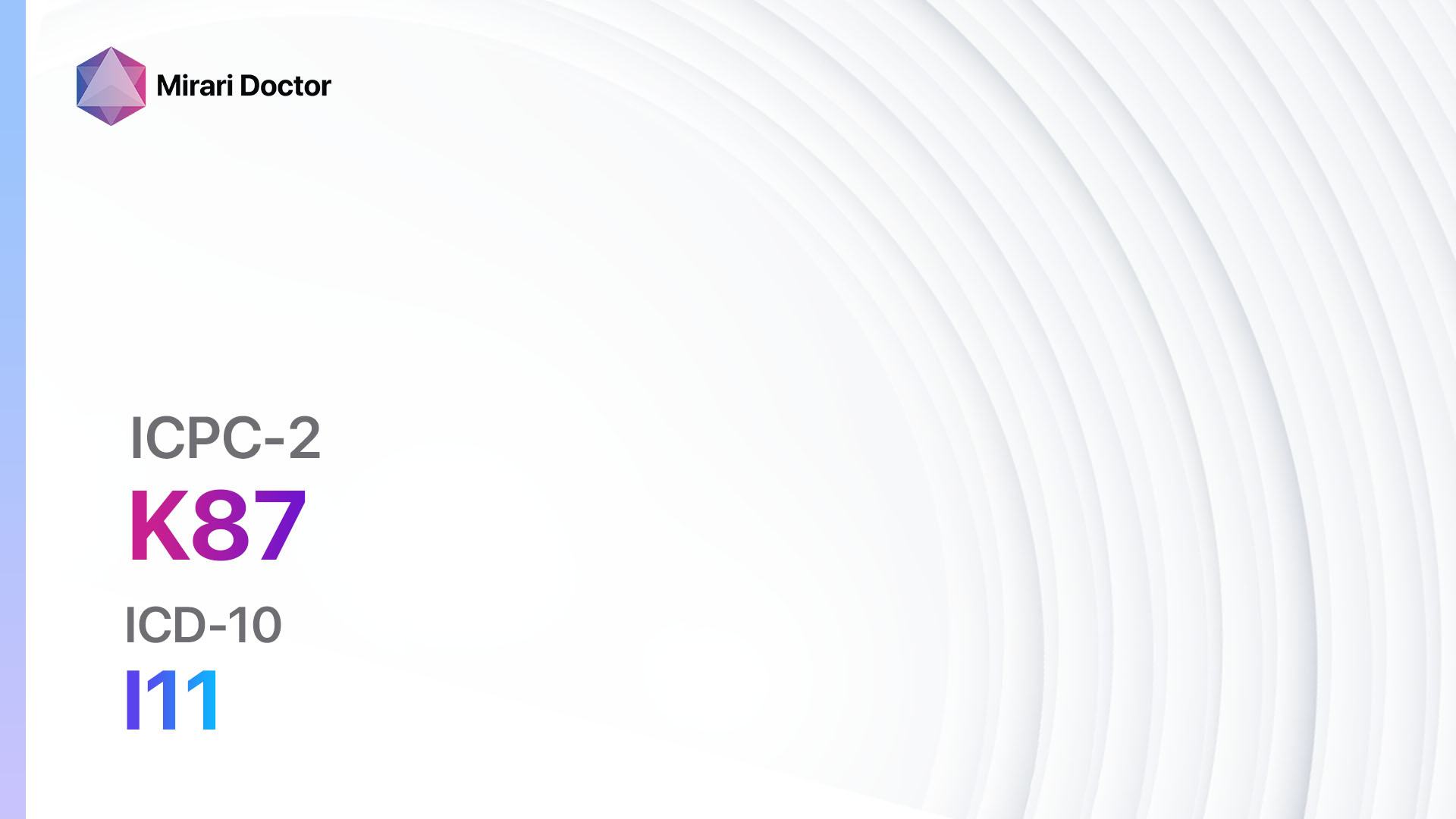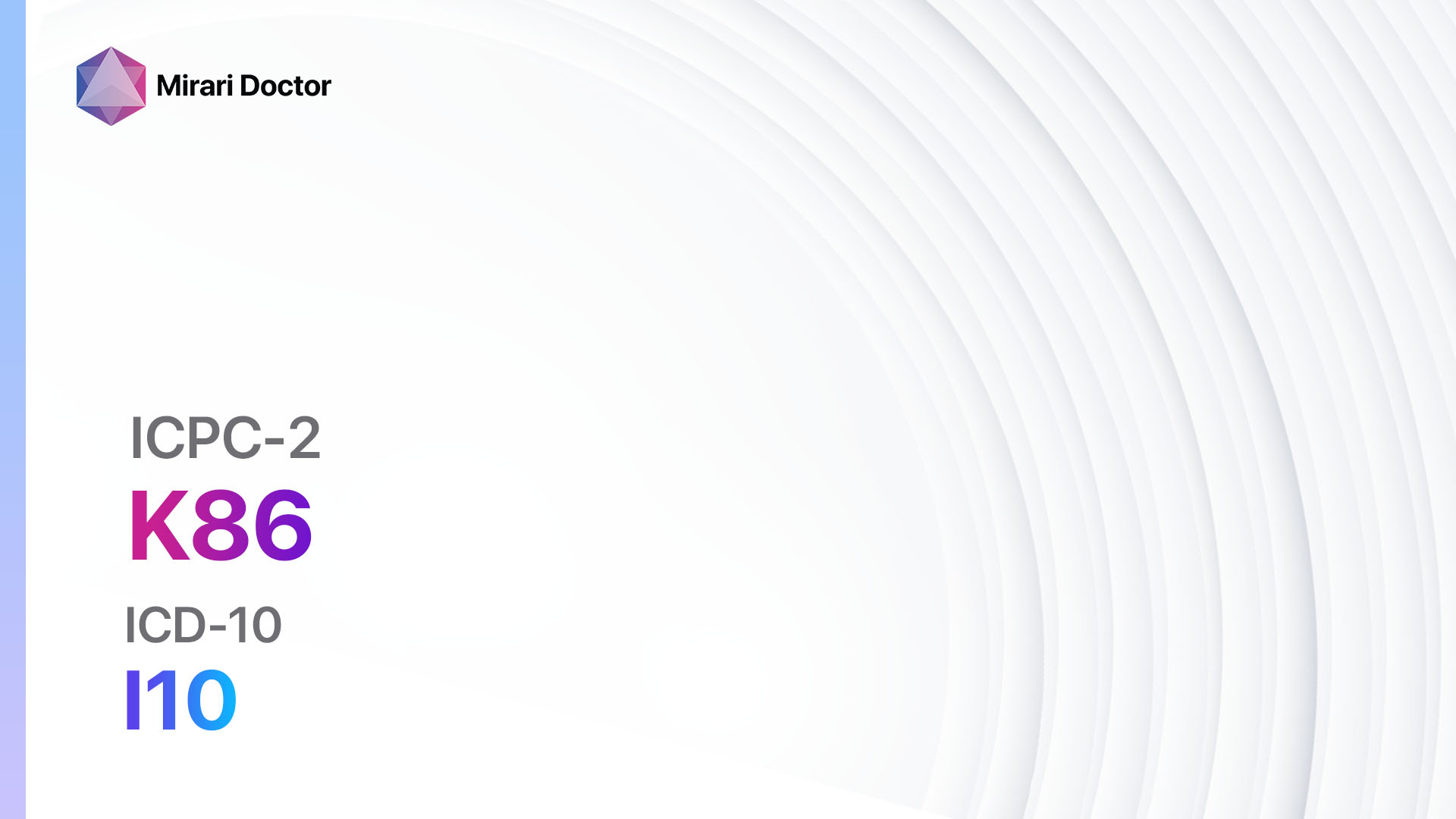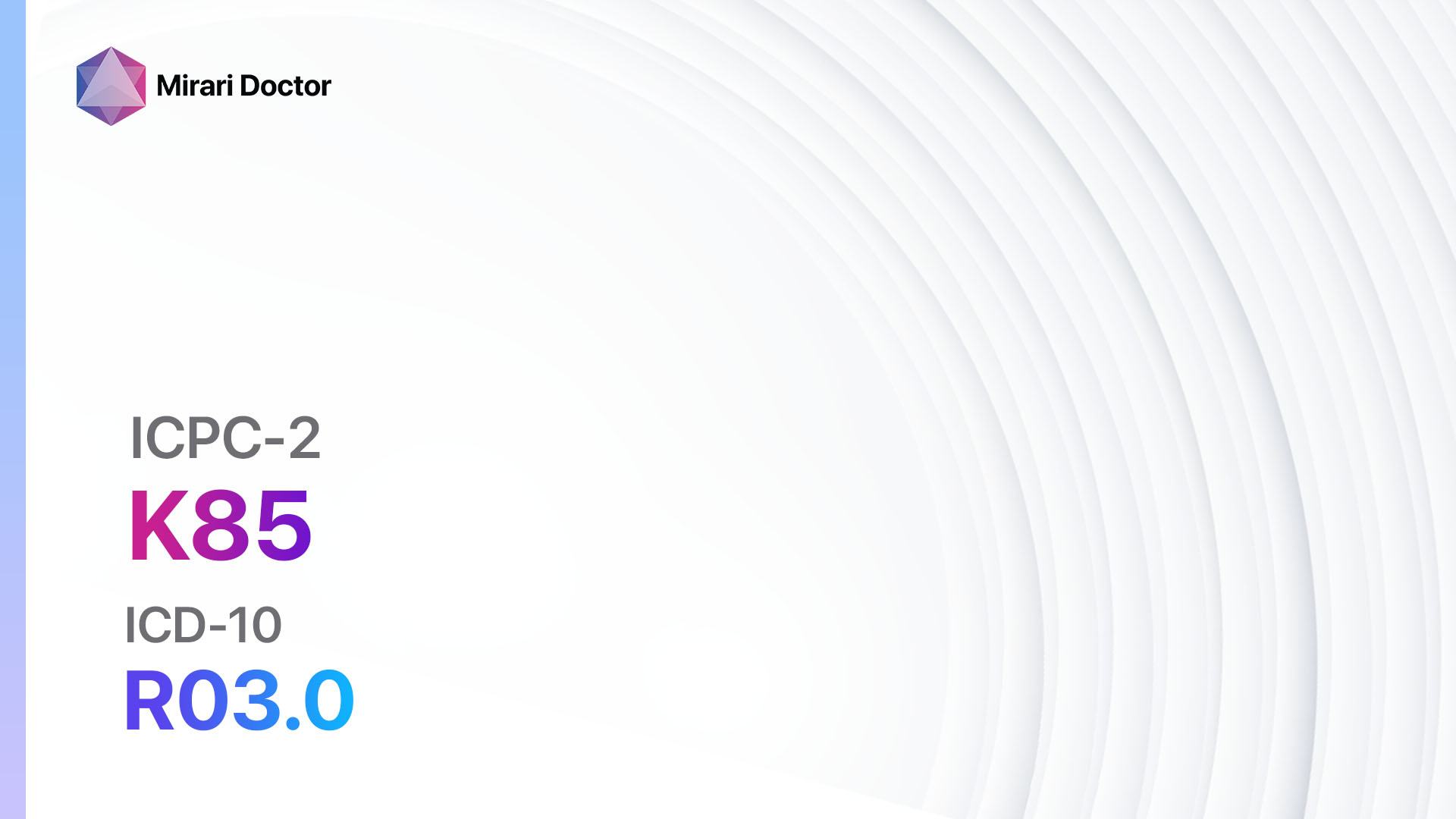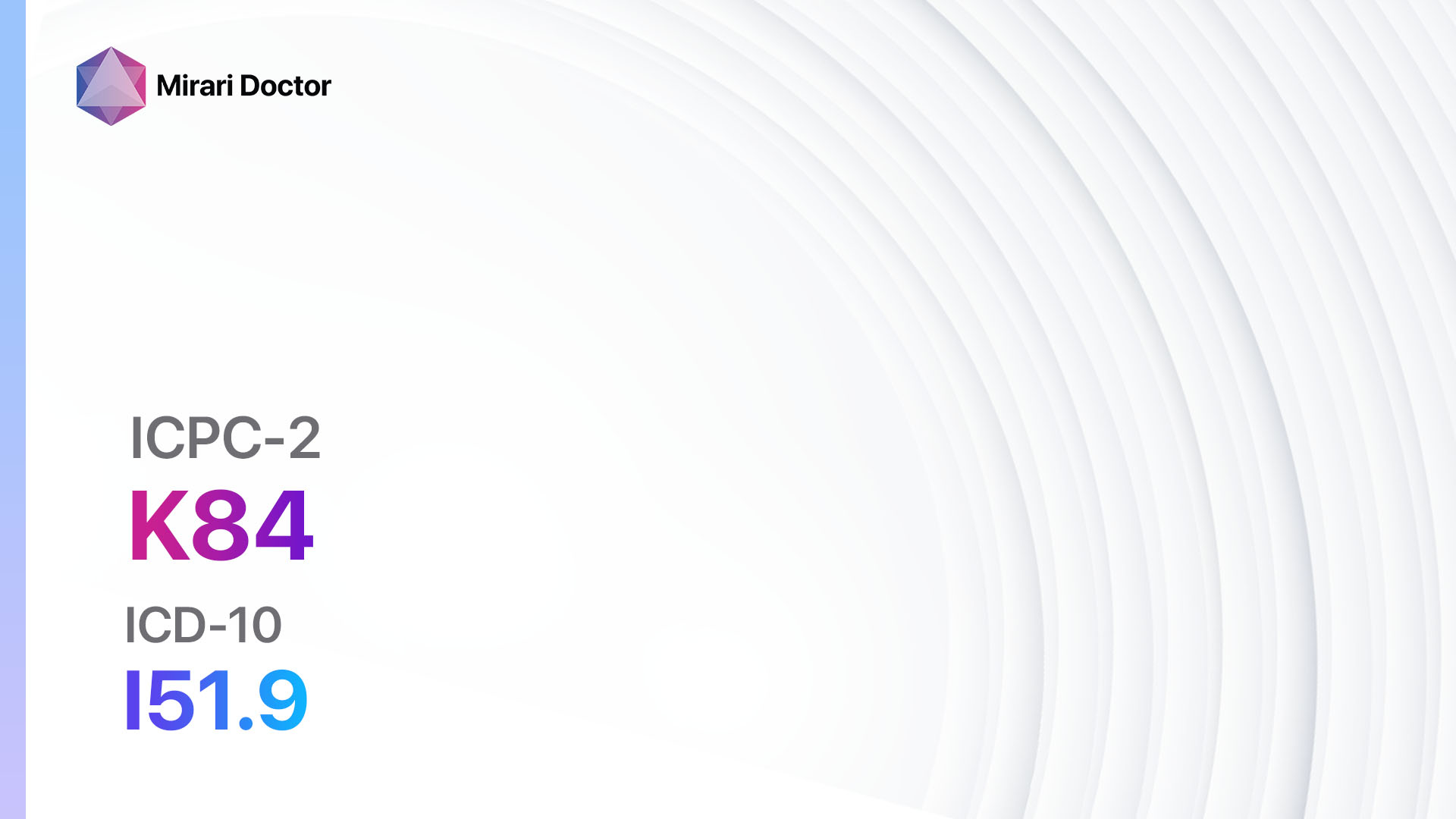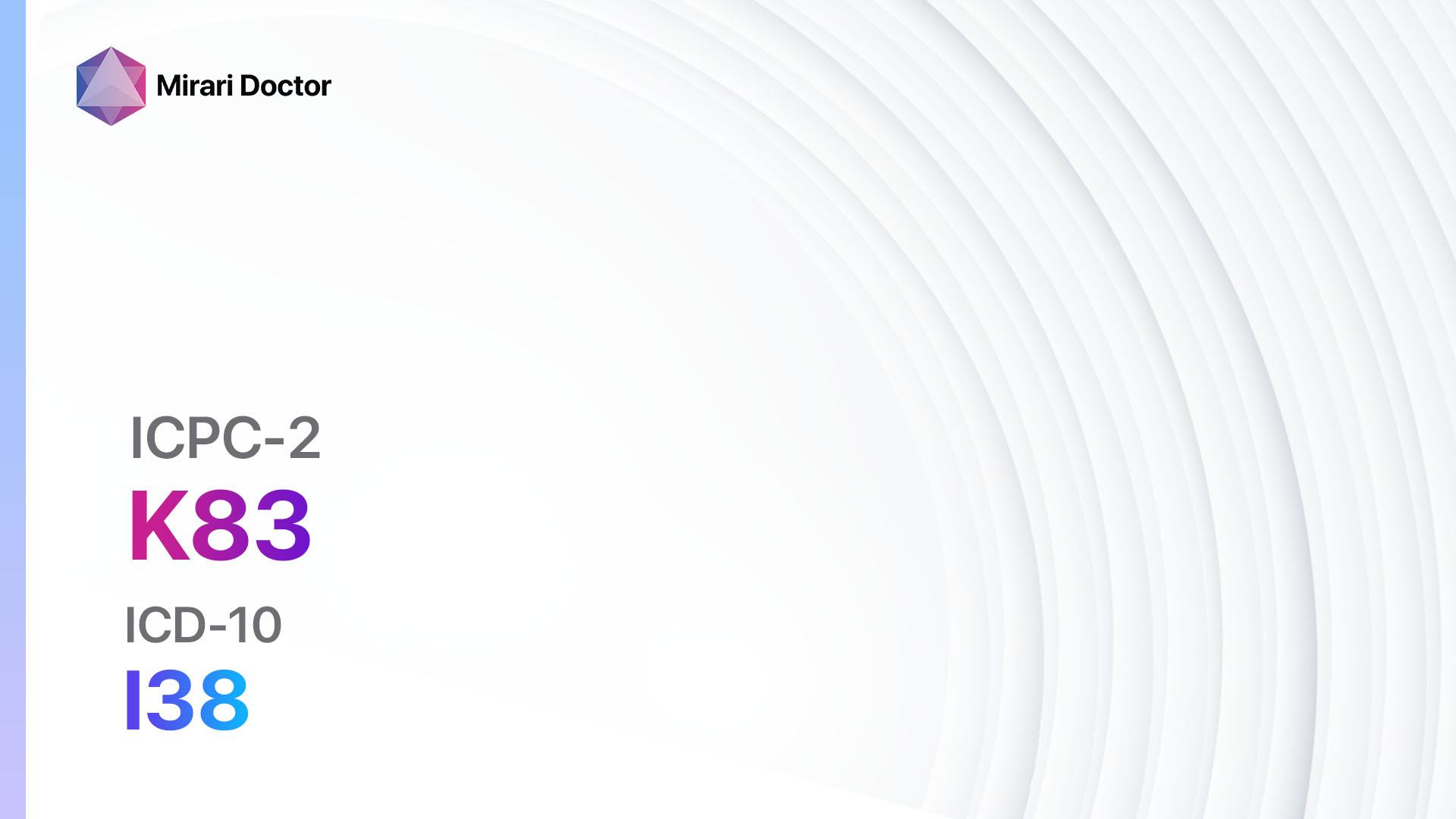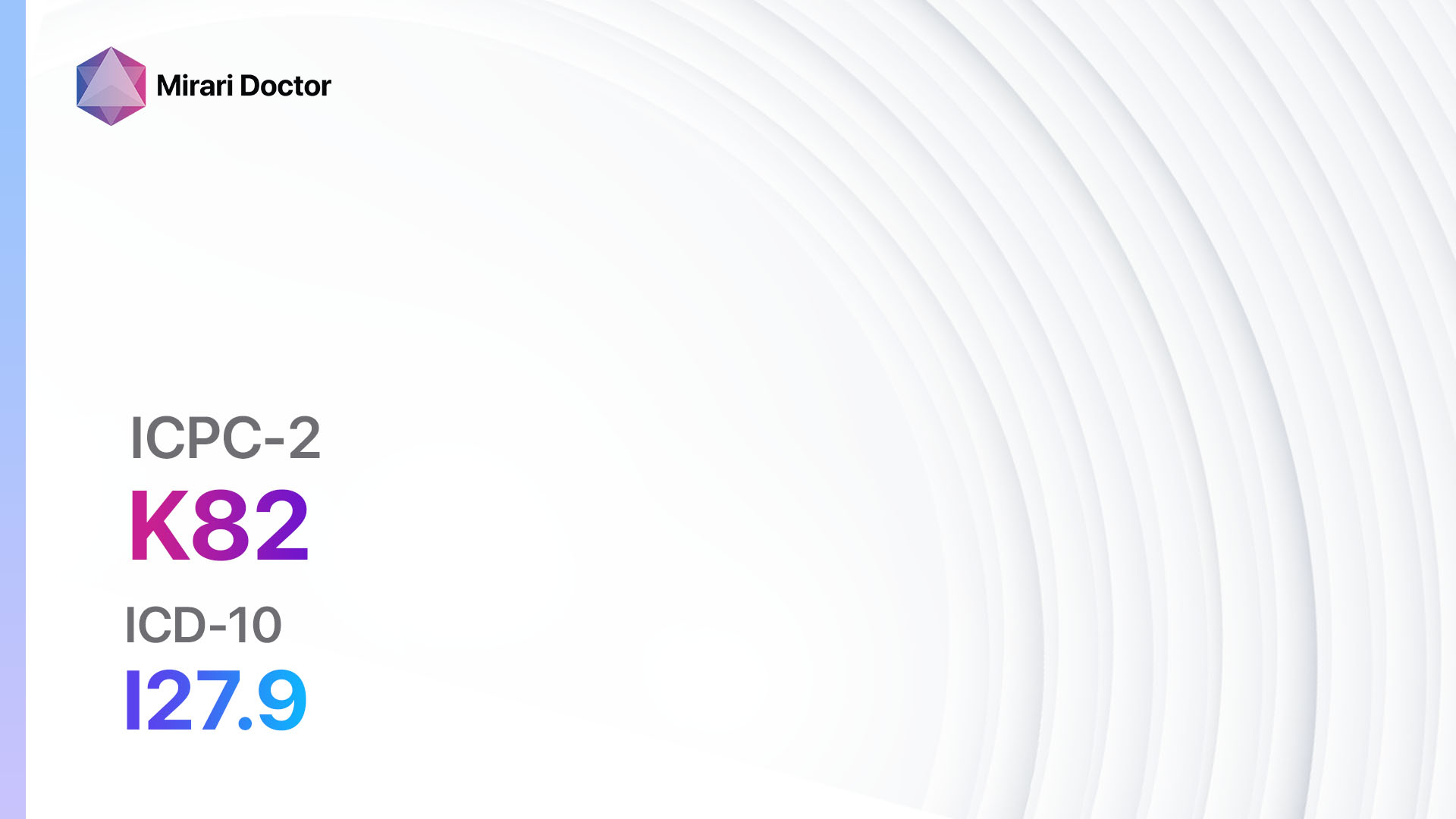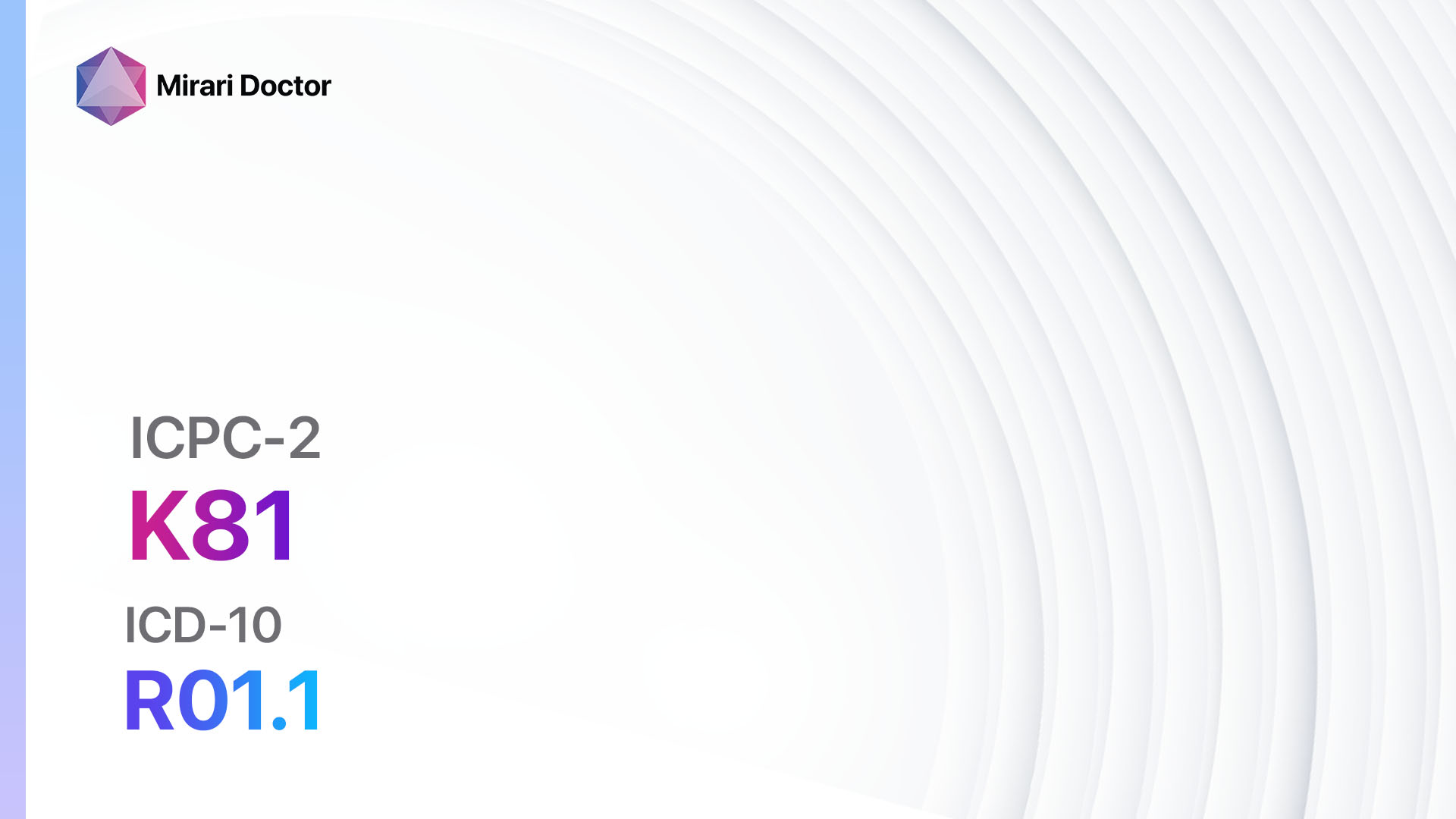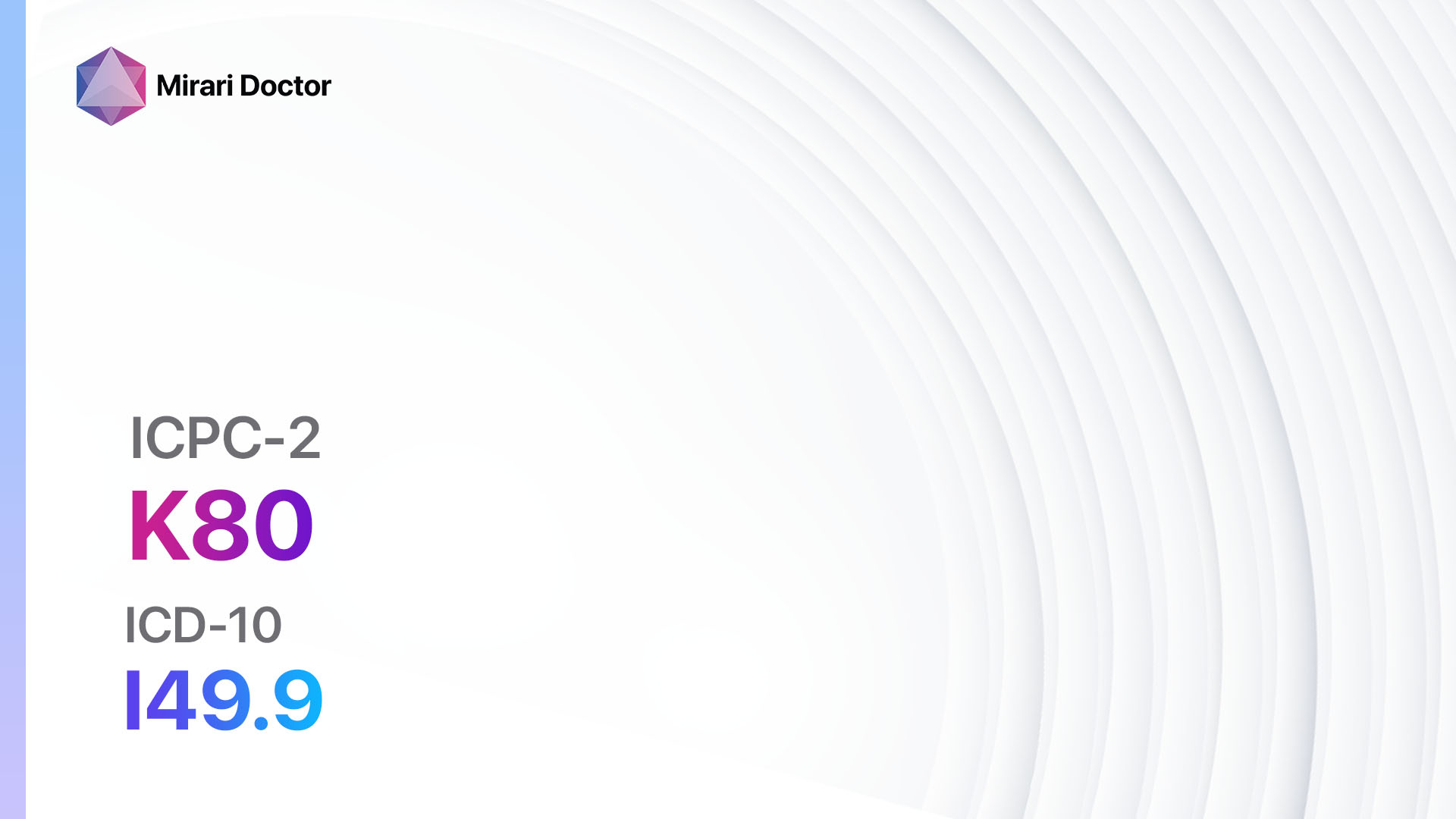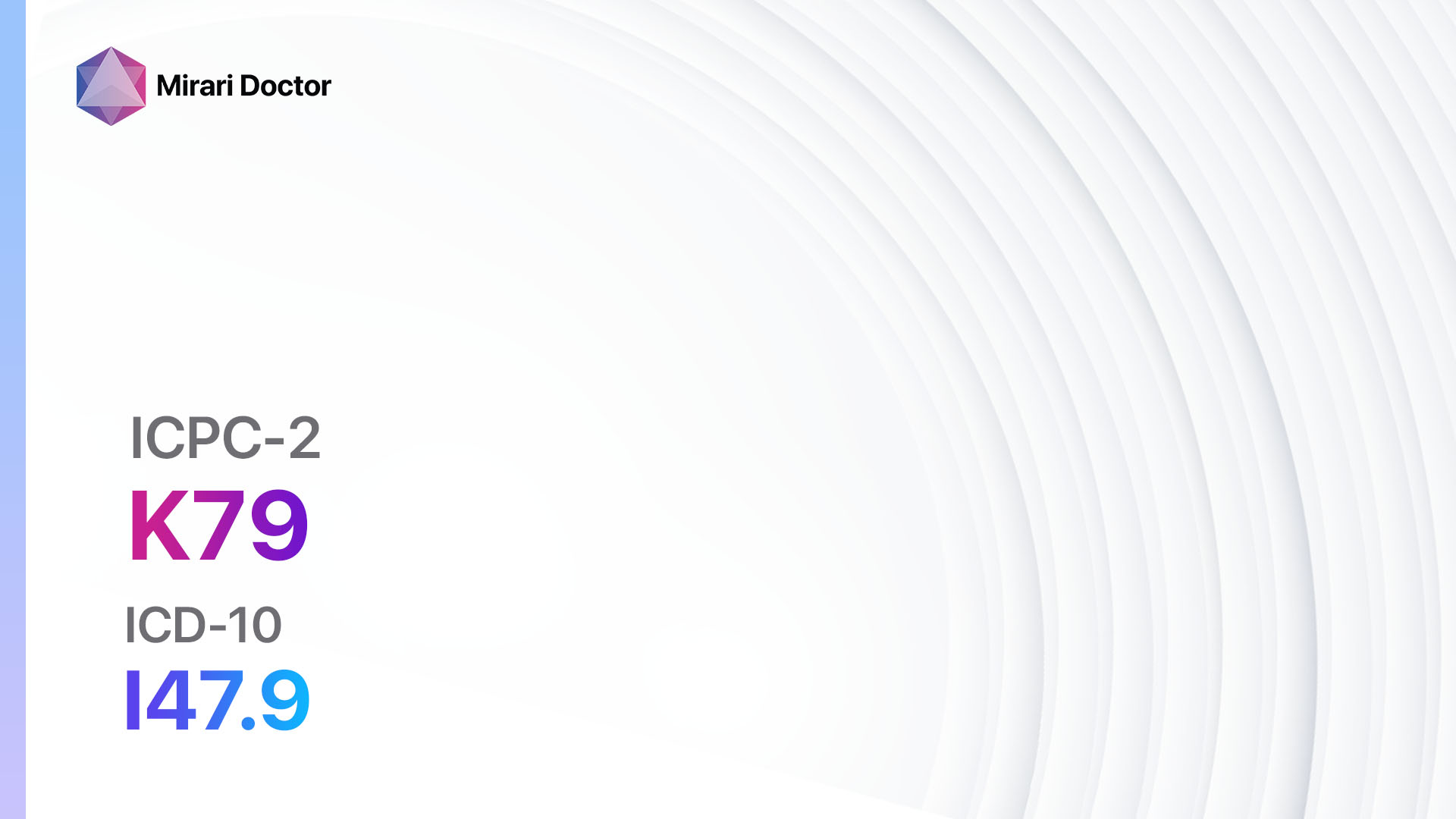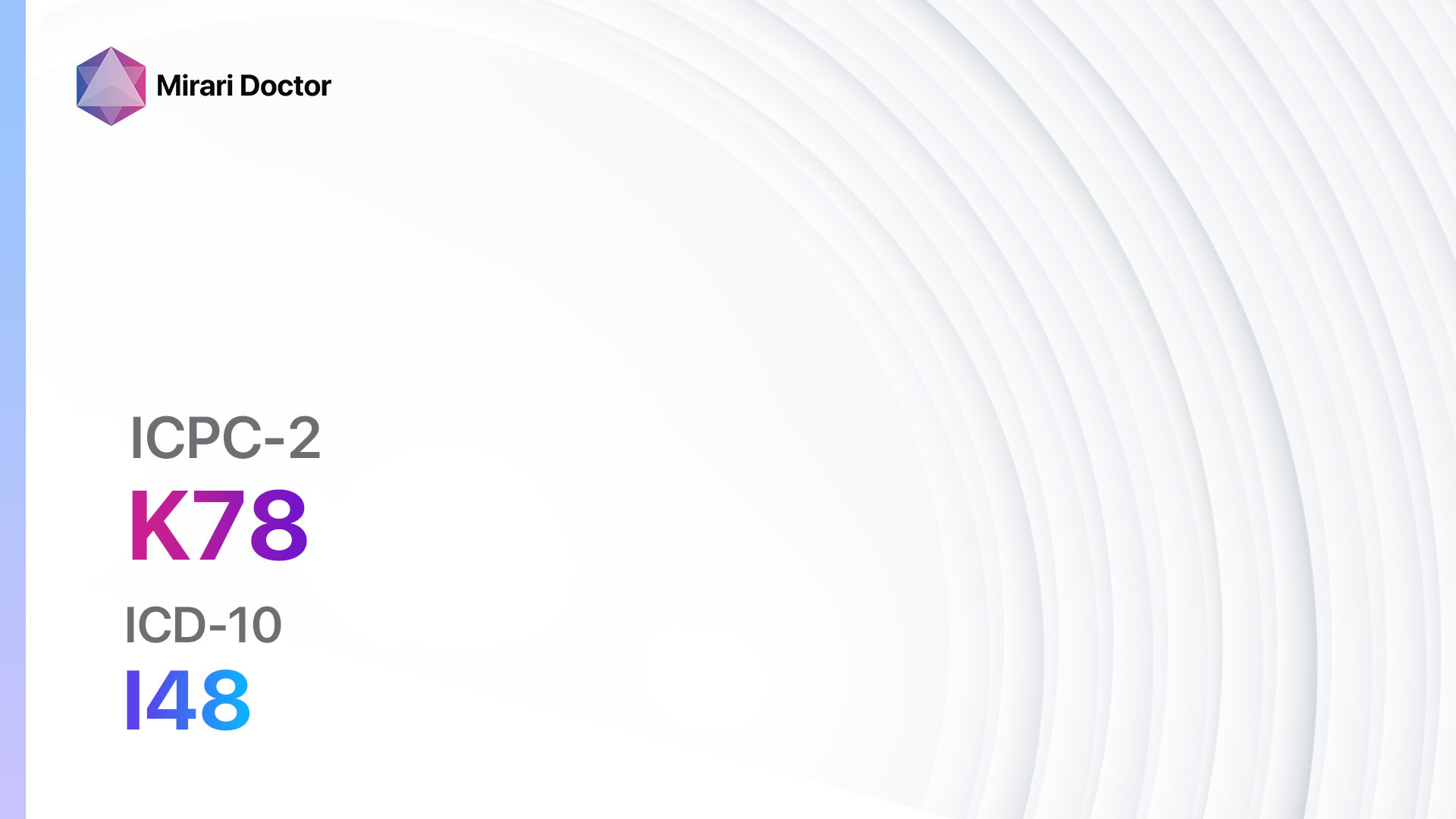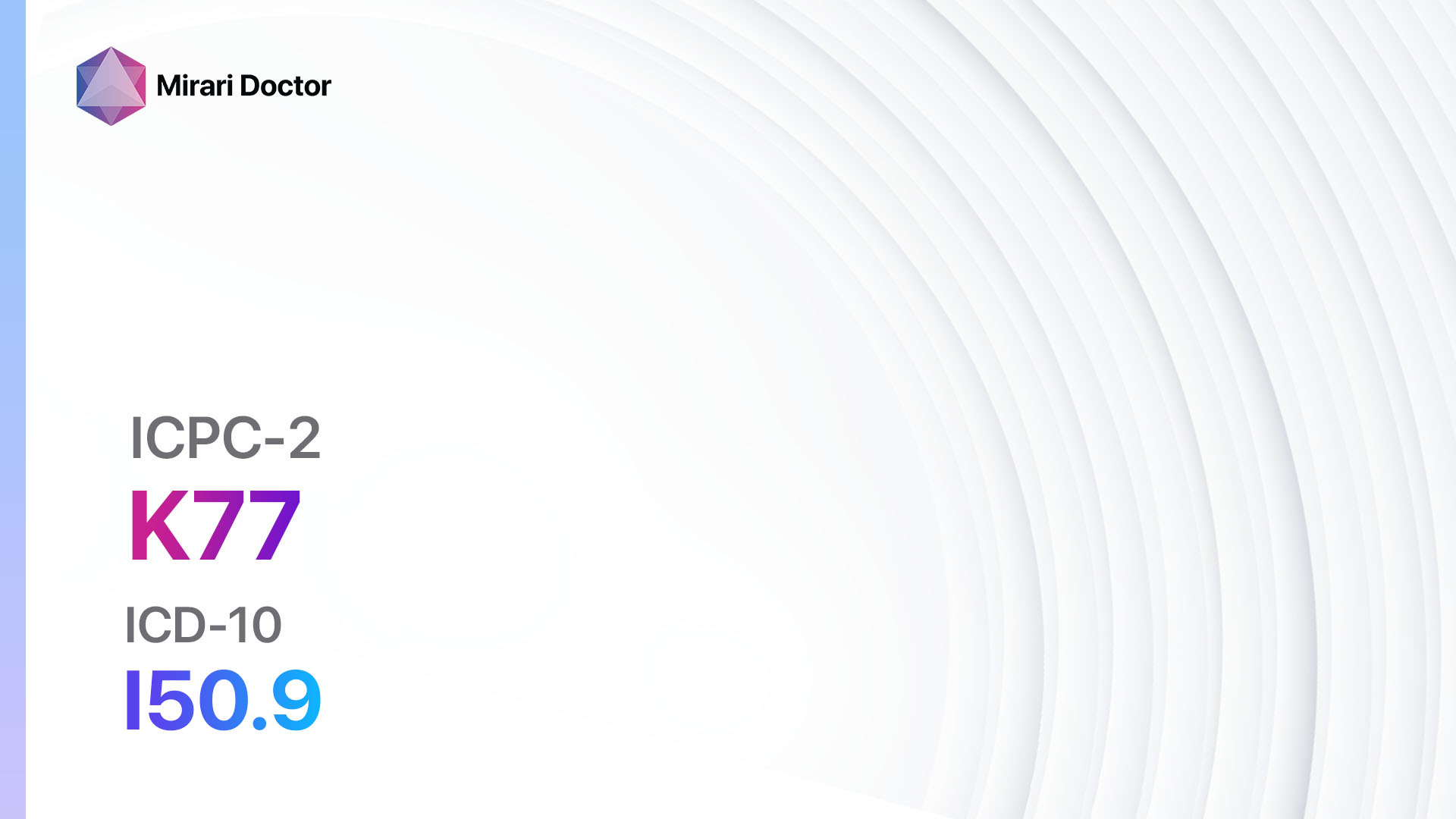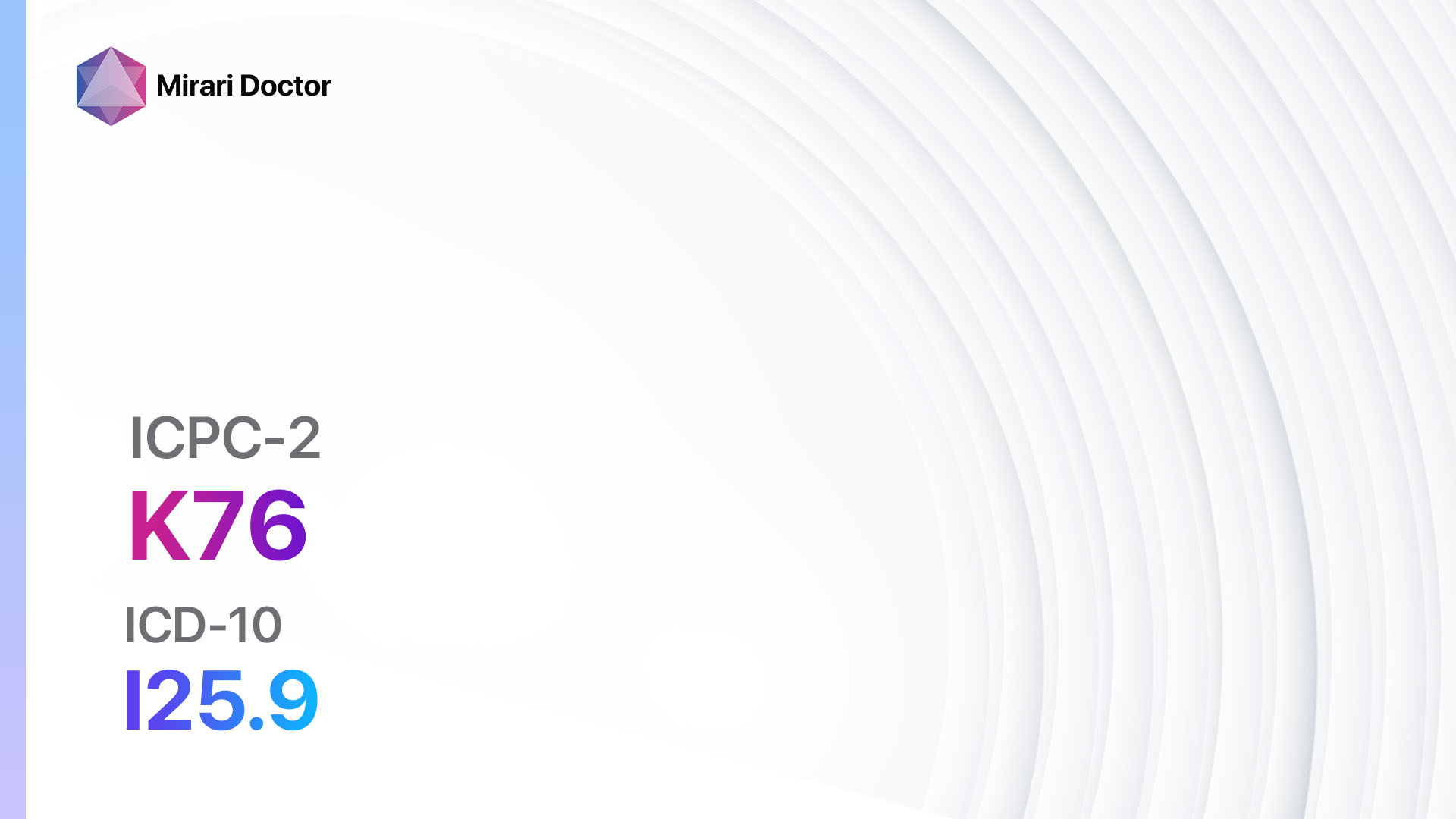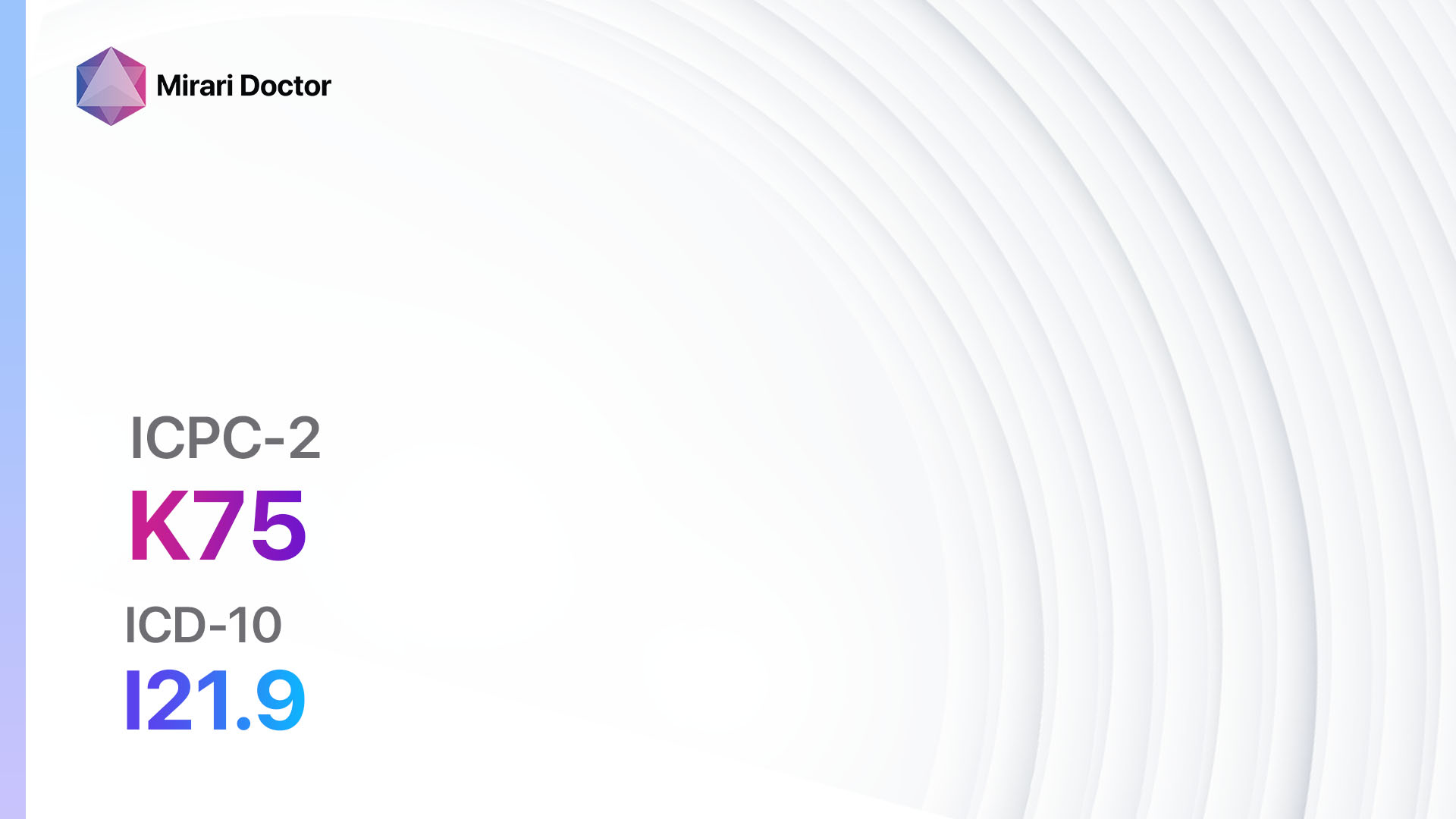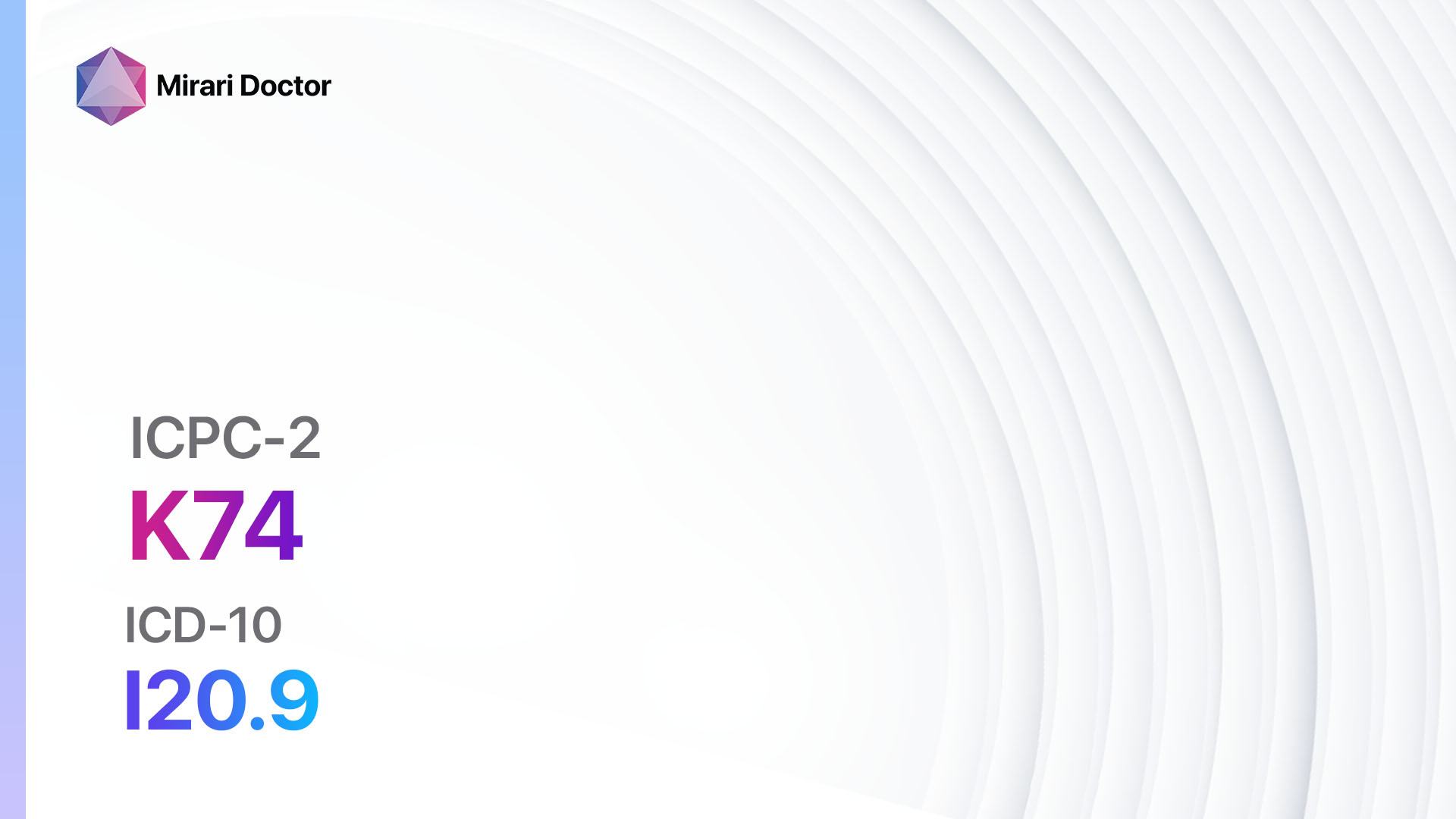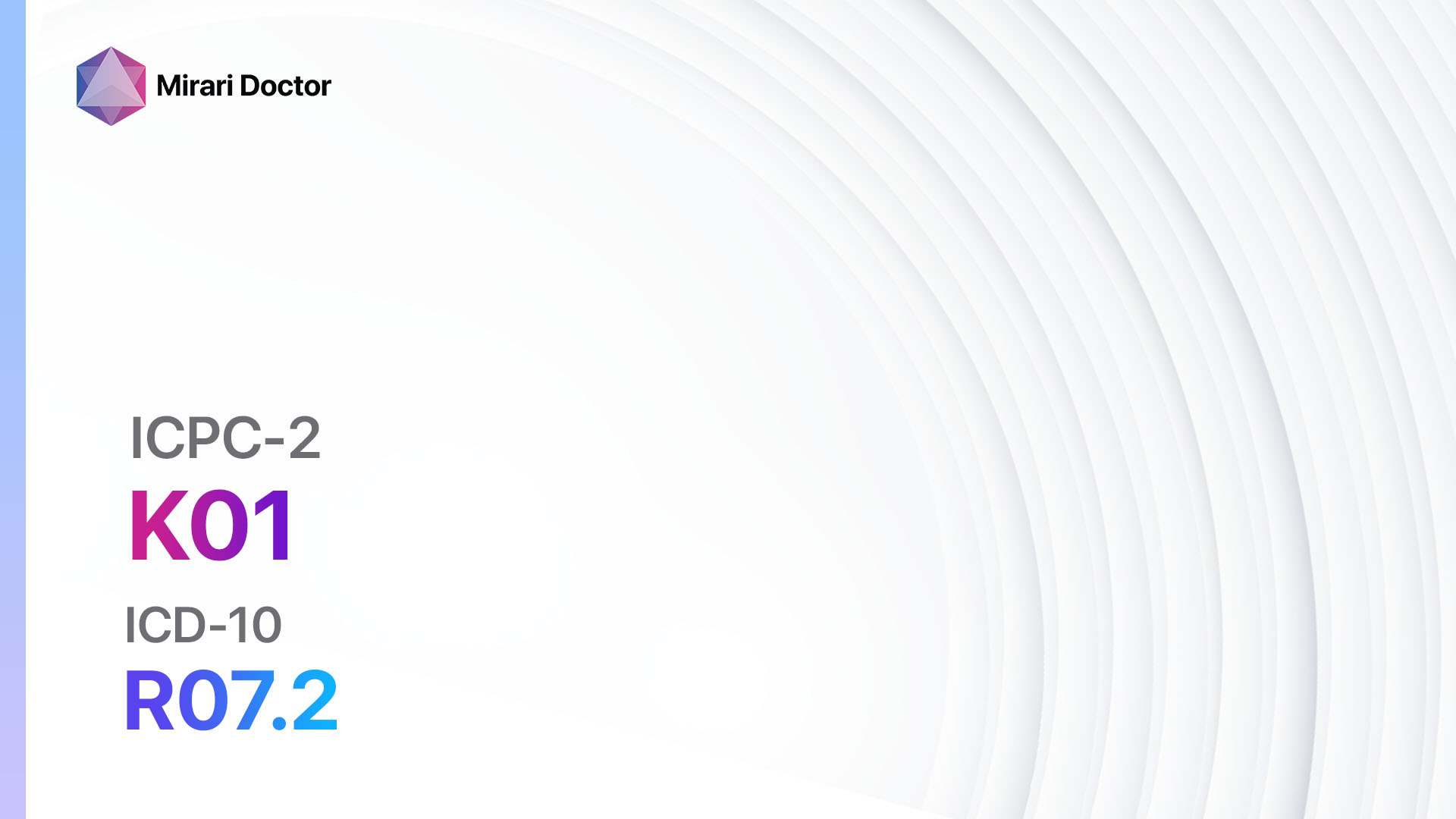
Introduction
Heart pain, also known as angina, is a common symptom of various heart conditions. It is characterized by discomfort or pain in the chest, which may radiate to the arms, shoulders, neck, jaw, or back[1]. Heart pain can be a sign of underlying heart disease and should be evaluated promptly[2]. The aim of this guide is to provide healthcare professionals with a comprehensive approach to diagnosing and managing heart pain.
Codes
Symptoms
- Chest pain or discomfort: Typically described as a squeezing, pressure, heaviness, or tightness in the chest[5].
- Pain radiating to the arms, shoulders, neck, jaw, or back: The pain may spread to these areas and may be accompanied by numbness or tingling[6].
- Shortness of breath: Difficulty breathing or a feeling of breathlessness[7].
- Fatigue: Unexplained tiredness or lack of energy[8].
- Nausea or indigestion: Some individuals may experience these symptoms along with heart pain[9].
Causes
- Coronary artery disease: The most common cause of heart pain, occurs when the arteries that supply blood to the heart become narrowed or blocked[10].
- Coronary artery spasm: Sudden constriction of the coronary arteries, leading to reduced blood flow to the heart.
- Aortic stenosis: Narrowing of the aortic valve, which obstructs blood flow from the heart.
- Myocardial infarction: A heart attack, which occurs when there is a complete blockage of blood flow to a part of the heart muscle.
- Angina pectoris: Chest pain caused by reduced blood flow to the heart muscle.
Diagnostic Steps
Medical History
- Gather information about the patient’s risk factors for heart disease, such as smoking, high blood pressure, high cholesterol, diabetes, and family history.
- Ask about the characteristics of the pain, including its location, duration, intensity, and triggers.
- Inquire about other associated symptoms, such as shortness of breath, nausea, or sweating.
- Assess the patient’s medical history, including any previous heart conditions or procedures.
Physical Examination
- Measure the patient’s blood pressure, heart rate, and respiratory rate.
- Auscultate the heart for abnormal sounds, such as murmurs or irregular rhythms.
- Palpate the chest for tenderness or discomfort.
- Check for signs of heart failure, such as edema in the legs or jugular venous distention.
Laboratory Tests
- Complete blood count (CBC): To assess for anemia or infection.
- Lipid profile: To evaluate the patient’s cholesterol levels.
- Cardiac biomarkers: Such as troponin, to determine if there has been any damage to the heart muscle.
- Blood glucose: To screen for diabetes, which is a risk factor for heart disease.
- Thyroid function tests: To rule out any thyroid abnormalities that may contribute to heart symptoms.
Diagnostic Imaging
- Electrocardiogram (ECG): To evaluate the electrical activity of the heart and detect any abnormalities.
- Stress test: A test that measures the heart’s response to physical exertion, often combined with imaging techniques such as echocardiography or nuclear imaging.
- Echocardiogram: Uses sound waves to create images of the heart and assess its structure and function.
- Coronary angiography: Invasive procedure that involves injecting contrast dye into the coronary arteries to visualize any blockages or narrowing.
- CT angiography: Non-invasive imaging technique that uses computed tomography to visualize the coronary arteries.
Other Tests
- Holter monitor: A portable device that records the heart’s electrical activity over a 24-hour period, providing a more comprehensive evaluation of heart rhythms.
- Cardiac catheterization: Invasive procedure that involves threading a catheter through a blood vessel to the heart, allowing for direct visualization and measurement of pressures within the heart.
Follow-up and Patient Education
- Schedule a follow-up appointment to review test results and discuss further management options.
- Provide education on lifestyle modifications, such as smoking cessation, healthy diet, regular exercise, and stress management.
- Discuss the importance of medication adherence and potential side effects.
- Address any concerns or questions the patient may have regarding their condition.
Possible Interventions
Traditional Interventions
Medications:
Top 5 drugs for heart pain:
- Nitroglycerin:
- Cost: $10-$50 for a month’s supply.
- Contraindications: Hypersensitivity to nitroglycerin, severe anemia, increased intracranial pressure.
- Side effects: Headache, dizziness, flushing.
- Severe side effects: Severe hypotension, methemoglobinemia.
- Drug interactions: Phosphodiesterase-5 inhibitors (e.g., sildenafil), beta-blockers.
- Warning: Should not be used with phosphodiesterase-5 inhibitors within 24 hours.
- Beta-blockers (e.g., Metoprolol, Atenolol):
- Cost: Generic versions are typically <$30/month.
- Contraindications: Severe bradycardia, heart block, uncontrolled heart failure.
- Side effects: Fatigue, dizziness, bradycardia.
- Severe side effects: Bronchospasm, heart block.
- Drug interactions: Calcium channel blockers, insulin.
- Warning: Should not be abruptly stopped.
- Calcium channel blockers (e.g., Amlodipine, Diltiazem):
- Cost: Generic versions can be $10-$50/month.
- Contraindications: Severe hypotension, heart failure, second- or third-degree heart block.
- Side effects: Peripheral edema, headache, dizziness.
- Severe side effects: Heart block, exacerbation of heart failure.
- Drug interactions: Beta-blockers, grapefruit juice.
- Warning: Monitoring of blood pressure and heart rate is required.
- Aspirin:
- Cost: Inexpensive (<$10/month).
- Contraindications: Active bleeding, peptic ulcer disease.
- Side effects: Upset stomach, bleeding.
- Severe side effects: Severe bleeding, allergic reactions.
- Drug interactions: NSAIDs, other blood thinners.
- Warning: Risk of bleeding.
- Statins (e.g., Atorvastatin, Simvastatin, Rosuvastatin):
- Cost: Generic versions can be $3-$50/month.
- Contraindications: Active liver disease, hypersensitivity.
- Side effects: Muscle pain, diarrhea, upset stomach.
- Severe side effects: Rhabdomyolysis, liver damage.
- Drug interactions: Grapefruit juice, other cholesterol-lowering agents.
- Warning: Regular liver function tests required.
Alternative Drugs:
- Angiotensin-converting enzyme (ACE) inhibitors (e.g., Lisinopril, Ramipril): Used in patients with heart failure or hypertension.
- Angiotensin receptor blockers (ARBs) (e.g., Losartan, Valsartan): Alternative to ACE inhibitors in patients who cannot tolerate them.
- Nitrates (e.g., Isosorbide dinitrate): Used for the prevention and treatment of angina.
- Calcium channel blockers (e.g., Verapamil, Nifedipine): Alternative to beta-blockers in patients with contraindications or intolerance.
Surgical Procedures:
- Coronary angioplasty and stent placement: A catheter is used to place a stent to open up narrowed arteries. Cost: $15,000 to $50,000.
- Coronary artery bypass surgery (CABG): Redirects blood around blocked or narrowed coronary arteries. Cost: $70,000 to $200,000.
Alternative Interventions
- Acupuncture: May help improve blood flow and reduce pain. Cost: $60-$120 per session.
- Chelation therapy: Controversial treatment involving the administration of chelating agents to remove heavy metals from the body. Cost: $75-$150 per session.
- Hyperbaric oxygen therapy: Involves breathing pure oxygen in a pressurized chamber to increase oxygen delivery to tissues. Cost: $200-$300 per session.
- Herbal supplements: Some herbs, such as garlic and hawthorn, may have potential benefits for improving heart health. Cost: Varies depending on the specific supplement.
- Mind-body techniques: Stress reduction techniques, such as meditation, yoga, or tai chi, may help manage heart pain. Cost: Varies depending on the specific practice.
Lifestyle Interventions
- Smoking cessation: Encourage the patient to quit smoking, as it is a major risk factor for heart disease. Cost: Varies depending on the method used (e.g., nicotine replacement therapy, medications, counseling).
- Healthy diet: Emphasize the importance of a balanced diet rich in fruits, vegetables, whole grains, lean proteins, and healthy fats. Cost: Varies depending on food choices and dietary preferences.
- Regular exercise: Recommend at least 150 minutes of moderate-intensity aerobic activity per week, such as brisk walking or cycling. Cost: Varies depending on the chosen activity (e.g., gym membership, equipment).
- Stress management: Encourage stress-reducing techniques, such as deep breathing exercises, mindfulness, or relaxation techniques. Cost: Varies depending on the chosen method (e.g., self-guided, therapy sessions).
- Weight management: Advise the patient to maintain a healthy weight through a combination of diet and exercise. Cost: Varies depending on individual needs and preferences.
It is important to note that the cost ranges provided are approximate and may vary depending on the location and availability of the interventions.
Mirari Cold Plasma Alternative Intervention
Understanding Mirari Cold Plasma
- Safe and Non-Invasive Treatment: Mirari Cold Plasma is a safe and non-invasive treatment option for various skin conditions. It does not require incisions, minimizing the risk of scarring, bleeding, or tissue damage.
- Efficient Extraction of Foreign Bodies: Mirari Cold Plasma facilitates the removal of foreign bodies from the skin by degrading and dissociating organic matter, allowing easier access and extraction.
- Pain Reduction and Comfort: Mirari Cold Plasma has a local analgesic effect, providing pain relief during the treatment, making it more comfortable for the patient.
- Reduced Risk of Infection: Mirari Cold Plasma has antimicrobial properties, effectively killing bacteria and reducing the risk of infection.
- Accelerated Healing and Minimal Scarring: Mirari Cold Plasma stimulates wound healing and tissue regeneration, reducing healing time and minimizing the formation of scars.
Mirari Cold Plasma Prescription
Video instructions for using Mirari Cold Plasma Device – K01 Heart pain (ICD-10:R07.2)
| Mild | Moderate | Severe |
| Mode setting: 1 (Infection) Location: 5 (Lungs) Morning: 15 minutes, Evening: 15 minutes |
Mode setting: 1 (Infection) Location: 5 (Lungs) Morning: 30 minutes, Lunch: 30 minutes, Evening: 30 minutes |
Mode setting: 1 (Infection) Location: 5 (Lungs) Morning: 30 minutes, Lunch: 30 minutes, Evening: 30 minutes |
| Mode setting: 2 (Wound Healing) Location: 5 (Lungs) Morning: 15 minutes, Evening: 15 minutes |
Mode setting: 2 (Wound Healing) Location: 5 (Lungs) Morning: 30 minutes, Lunch: 30 minutes, Evening: 30 minutes |
Mode setting: 2 (Wound Healing) Location: 5 (Lungs) Morning: 30 minutes, Lunch: 30 minutes, Evening: 30 minutes |
| Mode setting: 3 (Antiviral Therapy) Location: 0 (Localized) Morning: 15 minutes, Evening: 15 minutes |
Mode setting: 3 (Antiviral Therapy) Location: 0 (Localized) Morning: 30 minutes, Lunch: 30 minutes, Evening: 30 minutes |
Mode setting: 3 (Antiviral Therapy) Location: 0 (Localized) Morning: 30 minutes, Lunch: 30 minutes, Evening: 30 minutes |
| Mode setting: 7 (Immunotherapy) Location: 4 (Heart, Bile & Pancreas) Morning: 15 minutes, Evening: 15 minutes |
Mode setting: 7 (Immunotherapy) Location: 4 (Heart, Bile & Pancreas) Morning: 30 minutes, Lunch: 30 minutes, Evening: 30 minutes |
Mode setting:7 (Immunotherapy) Location: 4 (Heart, Bile & Pancreas) Morning: 30 minutes, Lunch: 30 minutes, Evening: 30 minutes |
| Total Morning: 60 minutes approx. $10 USD, Evening: 60 minutes approx. $10 USD |
Total Morning: 120 minutes approx. $20 USD, Lunch: 120 minutes approx. $20 USD, Evening: 120 minutes approx. $20 USD, |
Total Morning: 120 minutes approx. $20 USD, Lunch: 120 minutes approx. $20 USD, Evening: 120 minutes approx. $20 USD, |
| Usual treatment for 7-60 days approx. $140 USD – $1200 USD | Usual treatment for 6-8 weeks approx. $2,520 USD – $3,360 USD |
Usual treatment for 3-6 months approx. $5,400 USD – $10,800 USD
|
 |
|
Use the Mirari Cold Plasma device to treat Heart pain effectively.
WARNING: MIRARI COLD PLASMA IS DESIGNED FOR THE HUMAN BODY WITHOUT ANY ARTIFICIAL OR THIRD PARTY PRODUCTS. USE OF OTHER PRODUCTS IN COMBINATION WITH MIRARI COLD PLASMA MAY CAUSE UNPREDICTABLE EFFECTS, HARM OR INJURY. PLEASE CONSULT A MEDICAL PROFESSIONAL BEFORE COMBINING ANY OTHER PRODUCTS WITH USE OF MIRARI.
Step 1: Cleanse the Skin
- Start by cleaning the affected area of the skin with a gentle cleanser or mild soap and water. Gently pat the area dry with a clean towel.
Step 2: Prepare the Mirari Cold Plasma device
- Ensure that the Mirari Cold Plasma device is fully charged or has fresh batteries as per the manufacturer’s instructions. Make sure the device is clean and in good working condition.
- Switch on the Mirari device using the power button or by following the specific instructions provided with the device.
- Some Mirari devices may have adjustable settings for intensity or treatment duration. Follow the manufacturer’s instructions to select the appropriate settings based on your needs and the recommended guidelines.
Step 3: Apply the Device
- Place the Mirari device in direct contact with the affected area of the skin. Gently glide or hold the device over the skin surface, ensuring even coverage of the area experiencing.
- Slowly move the Mirari device in a circular motion or follow a specific pattern as indicated in the user manual. This helps ensure thorough treatment coverage.
Step 4: Monitor and Assess:
- Keep track of your progress and evaluate the effectiveness of the Mirari device in managing your Heart pain. If you have any concerns or notice any adverse reactions, consult with your health care professional.
Note
This guide is for informational purposes only and should not replace the advice of a medical professional. Always consult with your healthcare provider or a qualified medical professional for personal advice, diagnosis, or treatment. Do not solely rely on the information presented here for decisions about your health. Use of this information is at your own risk. The authors of this guide, nor any associated entities or platforms, are not responsible for any potential adverse effects or outcomes based on the content.
Mirari Cold Plasma System Disclaimer
- Purpose: The Mirari Cold Plasma System is a Class 2 medical device designed for use by trained healthcare professionals. It is registered for use in Thailand and Vietnam. It is not intended for use outside of these locations.
- Informational Use: The content and information provided with the device are for educational and informational purposes only. They are not a substitute for professional medical advice or care.
- Variable Outcomes: While the device is approved for specific uses, individual outcomes can differ. We do not assert or guarantee specific medical outcomes.
- Consultation: Prior to utilizing the device or making decisions based on its content, it is essential to consult with a Certified Mirari Tele-Therapist and your medical healthcare provider regarding specific protocols.
- Liability: By using this device, users are acknowledging and accepting all potential risks. Neither the manufacturer nor the distributor will be held accountable for any adverse reactions, injuries, or damages stemming from its use.
- Geographical Availability: This device has received approval for designated purposes by the Thai and Vietnam FDA. As of now, outside of Thailand and Vietnam, the Mirari Cold Plasma System is not available for purchase or use.
References
- Thygesen, K., Alpert, J. S., Jaffe, A. S., Chaitman, B. R., Bax, J. J., Morrow, D. A., & White, H. D. (2018). Fourth universal definition of myocardial infarction (2018). Journal of the American College of Cardiology, 72(18), 2231-2264.
- Fihn, S. D., Gardin, J. M., Abrams, J., Berra, K., Blankenship, J. C., Dallas, A. P., … & Williams, S. V. (2012). 2012 ACCF/AHA/ACP/AATS/PCNA/SCAI/STS guideline for the diagnosis and management of patients with stable ischemic heart disease: a report of the American College of Cardiology Foundation/American Heart Association task force on practice guidelines, and the American College of Physicians, American Association for Thoracic Surgery, Preventive Cardiovascular Nurses Association, Society for Cardiovascular Angiography and Interventions, and Society of Thoracic Surgeons. Journal of the American College of Cardiology, 60(24), e44-e164.
- WONCA International Classification Committee. (1998). ICPC-2: International classification of primary care. Oxford University Press, USA.
- World Health Organization. (2004). ICD-10: international statistical classification of diseases and related health problems: tenth revision. World Health Organization.
- Swap, C. J., & Nagurney, J. T. (2005). Value and limitations of chest pain history in the evaluation of patients with suspected acute coronary syndromes. Jama, 294(20), 2623-2629.
- Wertli, M. M., Ruchti, K. B., Steurer, J., & Held, U. (2013). Diagnostic indicators of non-cardiovascular chest pain: a systematic review and meta-analysis. BMC medicine, 11(1), 1-21.
- Abidov, A., Rozanski, A., Hachamovitch, R., Hayes, S. W., Aboul-Enein, F., Cohen, I., … & Berman, D. S. (2005). Prognostic significance of dyspnea in patients referred for cardiac stress testing. New England Journal of Medicine, 353(18), 1889-1898.
- Ekelund, U., Steene-Johannessen, J., Brown, W. J., Fagerland, M. W., Owen, N., Powell, K. E., … & Lancet Sedentary Behaviour Working Group. (2016). Does physical activity attenuate, or even eliminate, the detrimental association of sitting time with mortality? A harmonised meta-analysis of data from more than 1 million men and women. The Lancet, 388(10051), 1302-1310.
- Eslick, G. D., Jones, M. P., & Talley, N. J. (2003). Non-cardiac chest pain: prevalence, risk factors, impact and consulting—a population-based study. Alimentary pharmacology & therapeutics, 17(9), 1115-1124.
- Knuuti, J., Wijns, W., Saraste, A., Capodanno, D., Barbato, E., Funck-Brentano, C., … & Clapp, B. (2020). 2019 ESC Guidelines for the diagnosis and management of chronic coronary syndromes: the Task Force for the diagnosis and management of chronic coronary syndromes of the European Society of Cardiology (ESC). European heart journal, 41(3), 407-477.
Related articles
Made in USA


